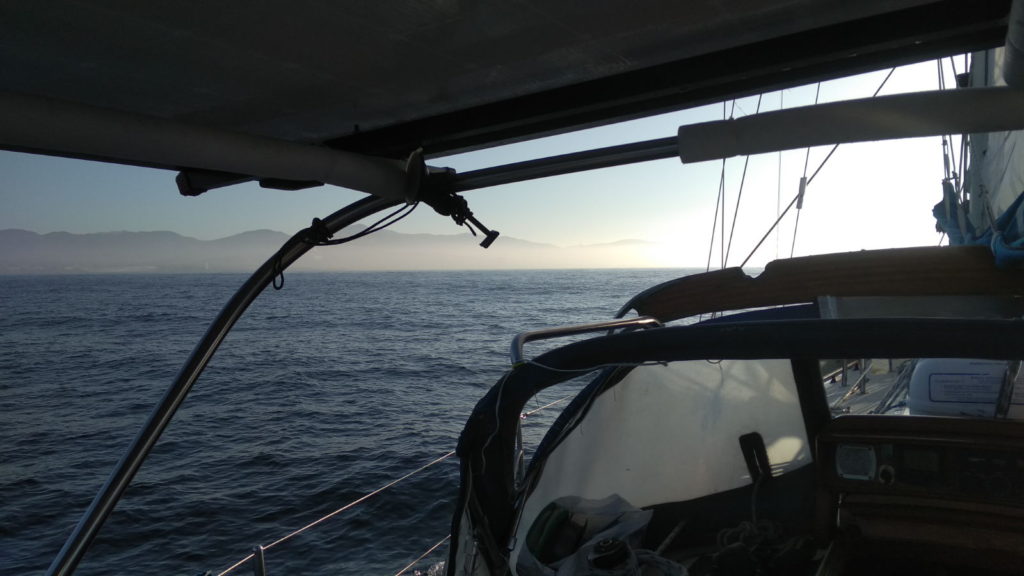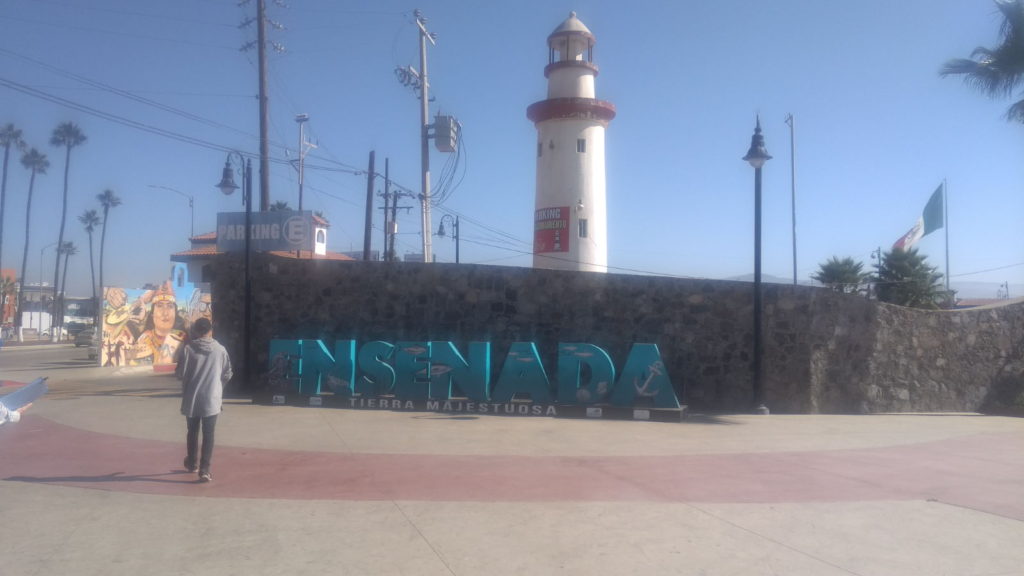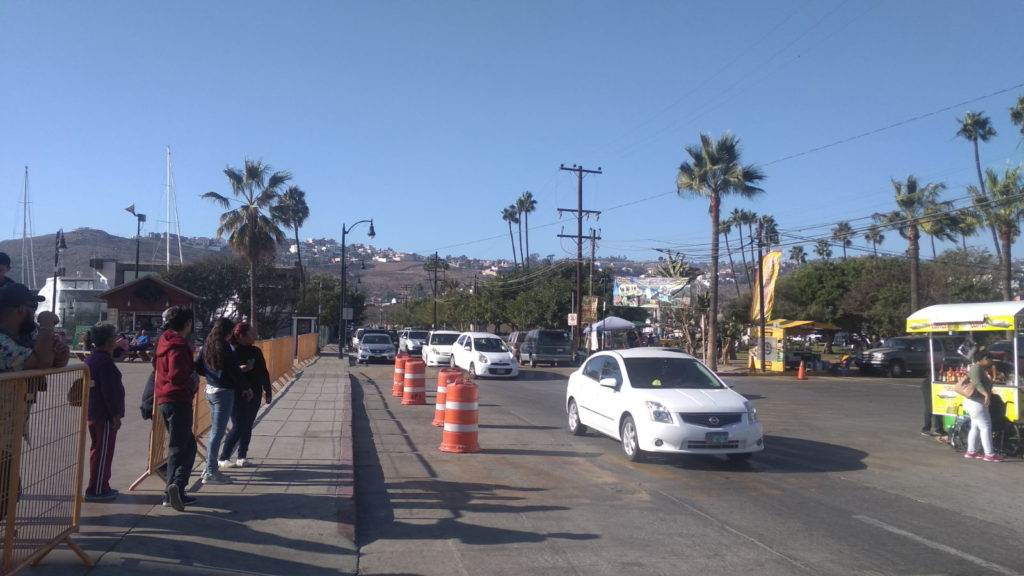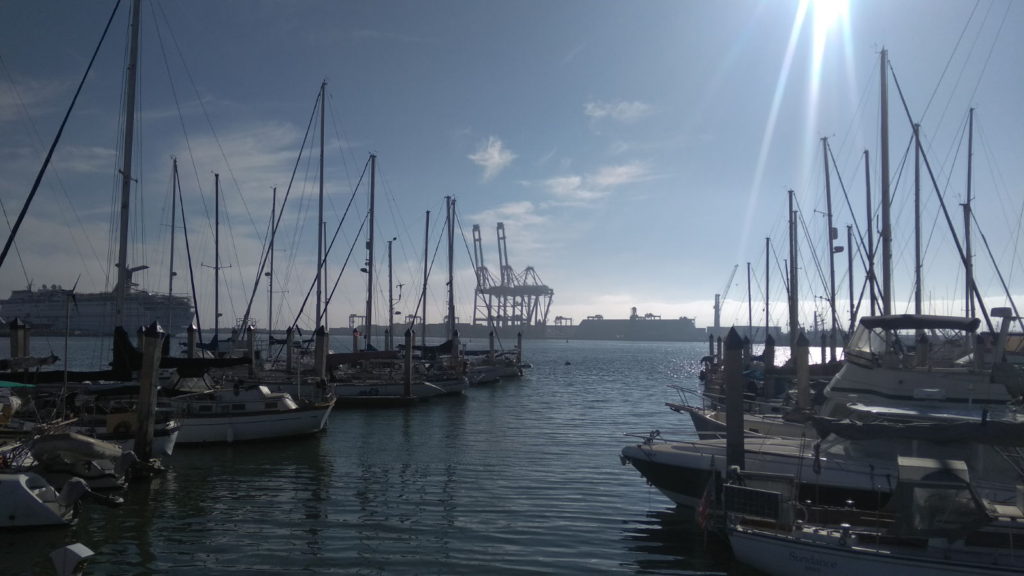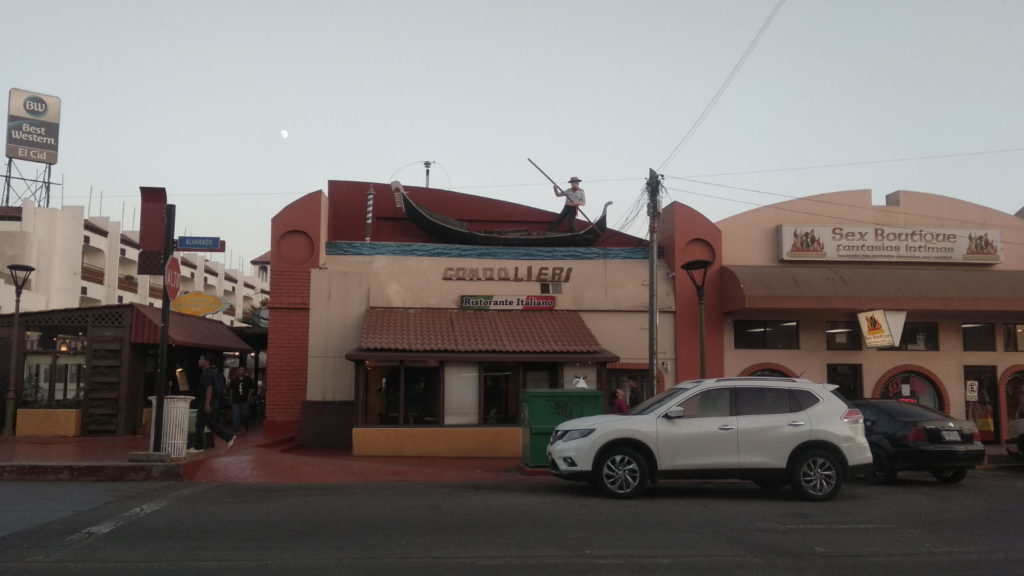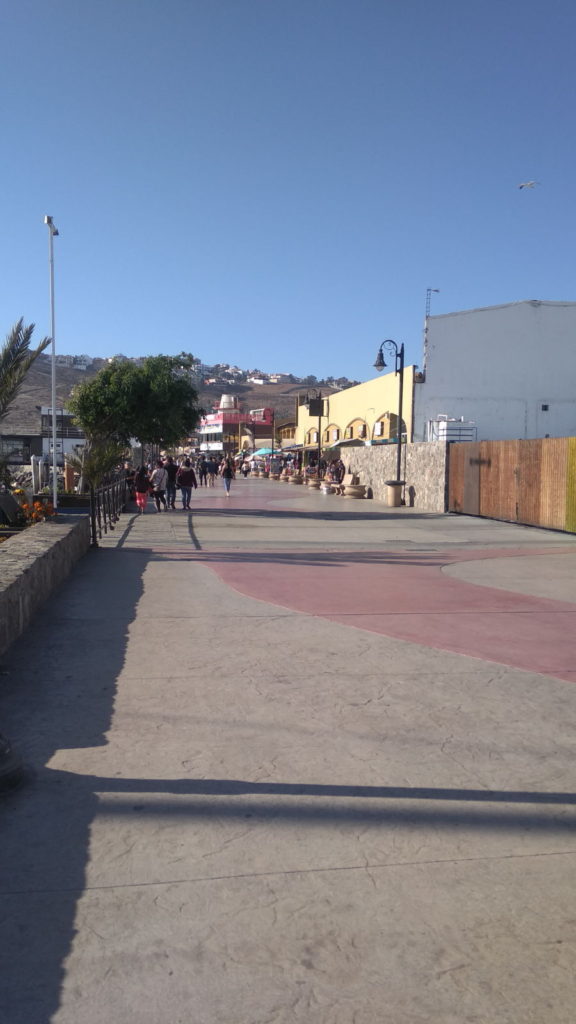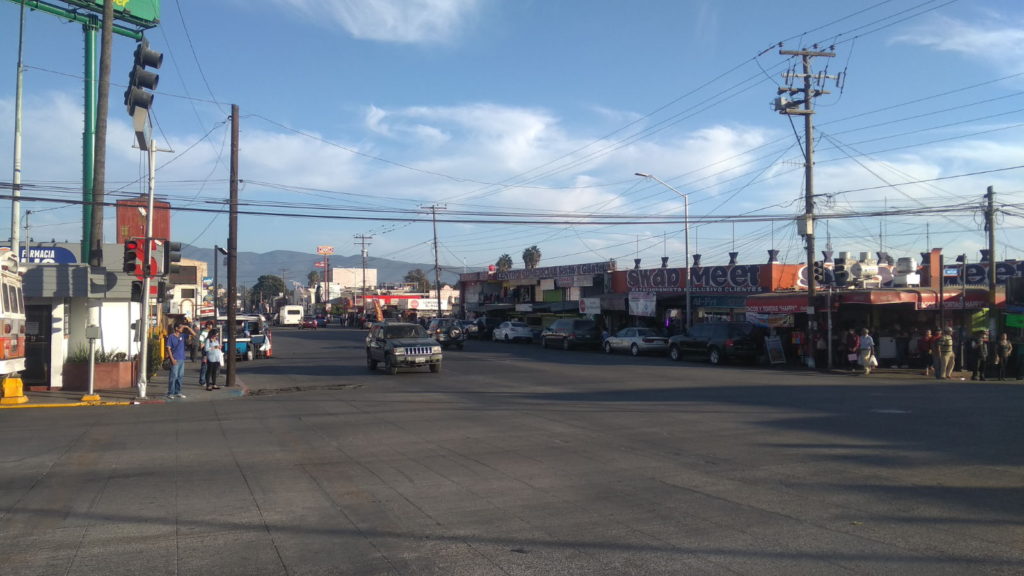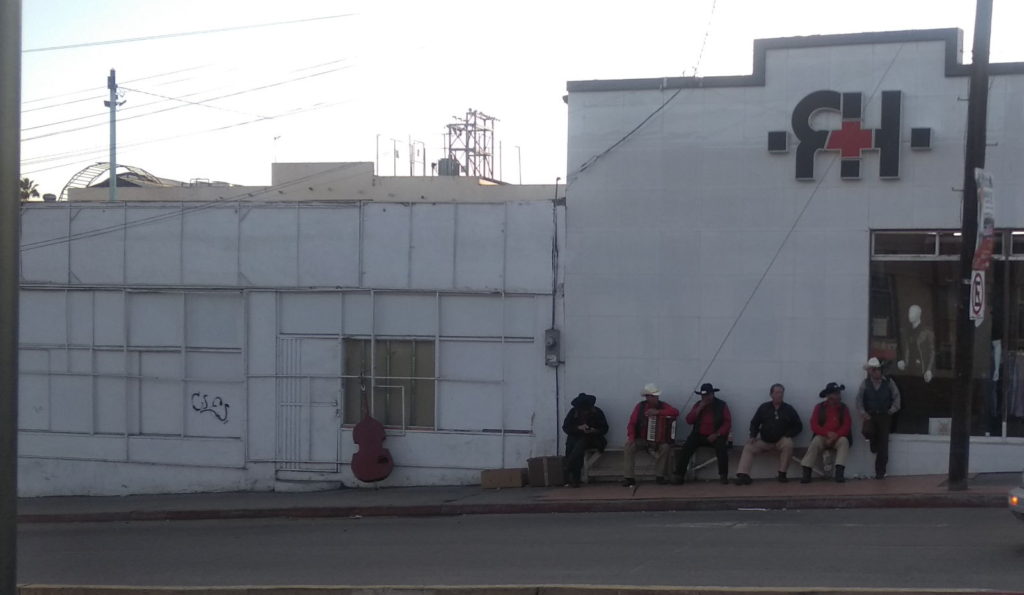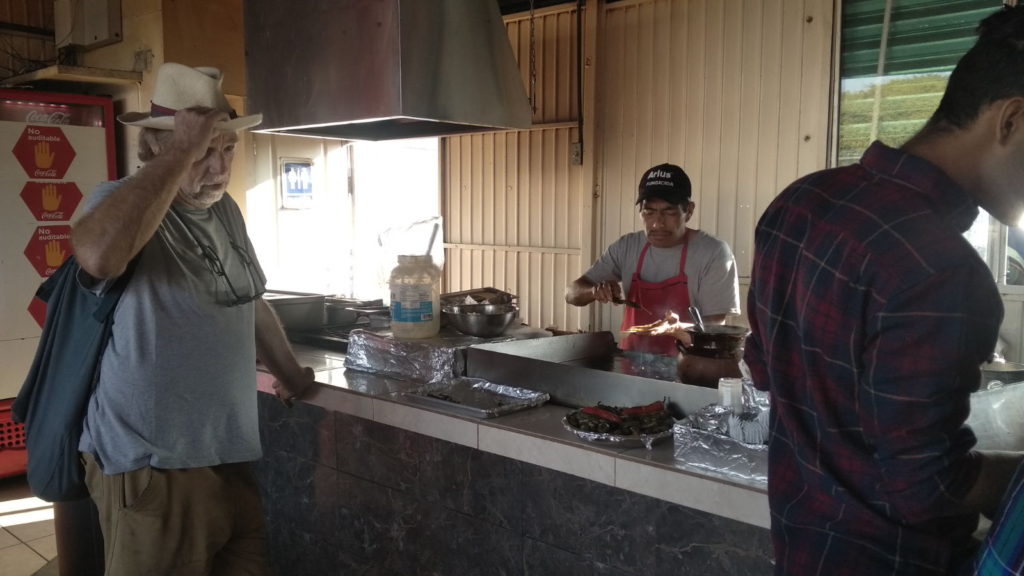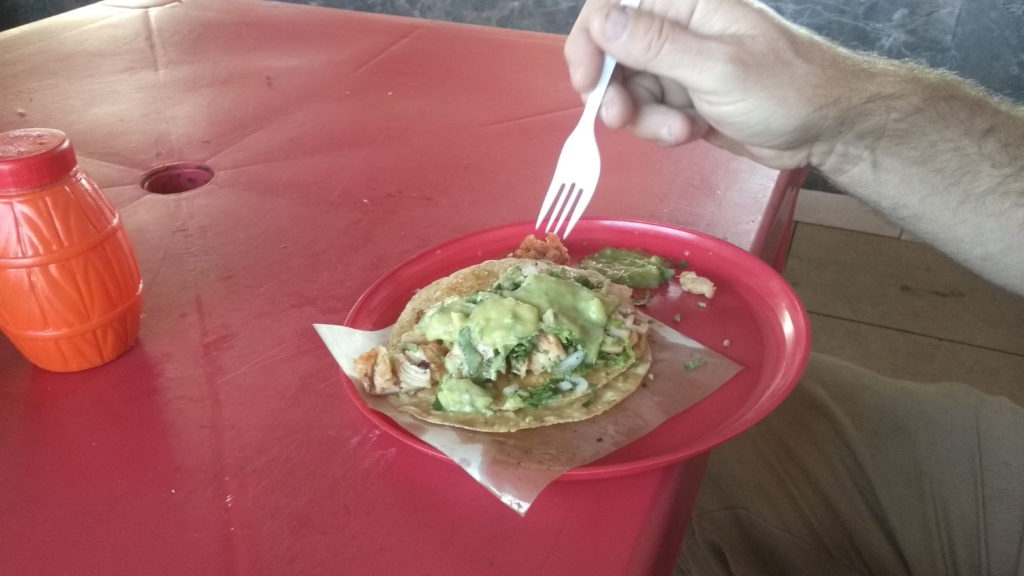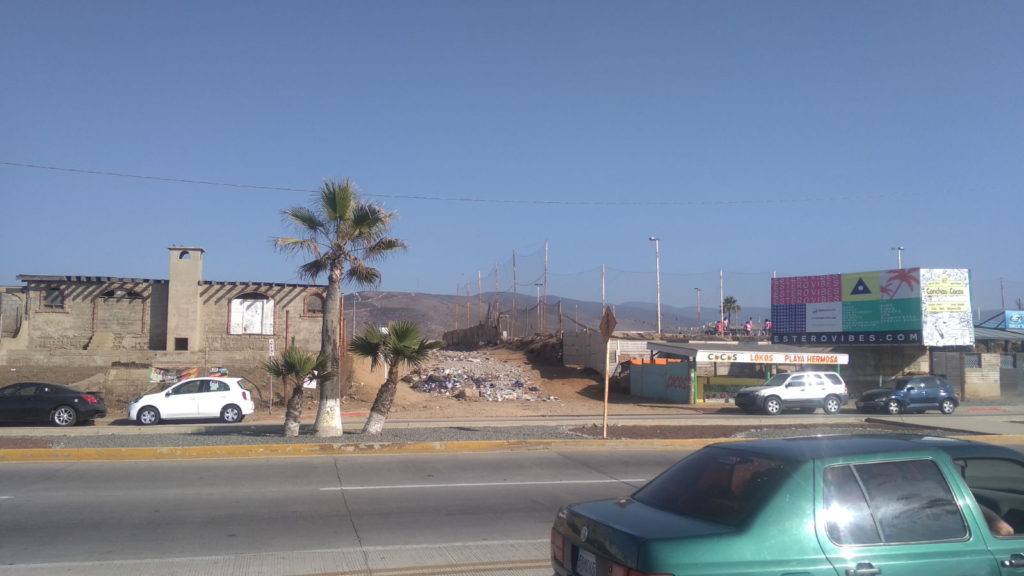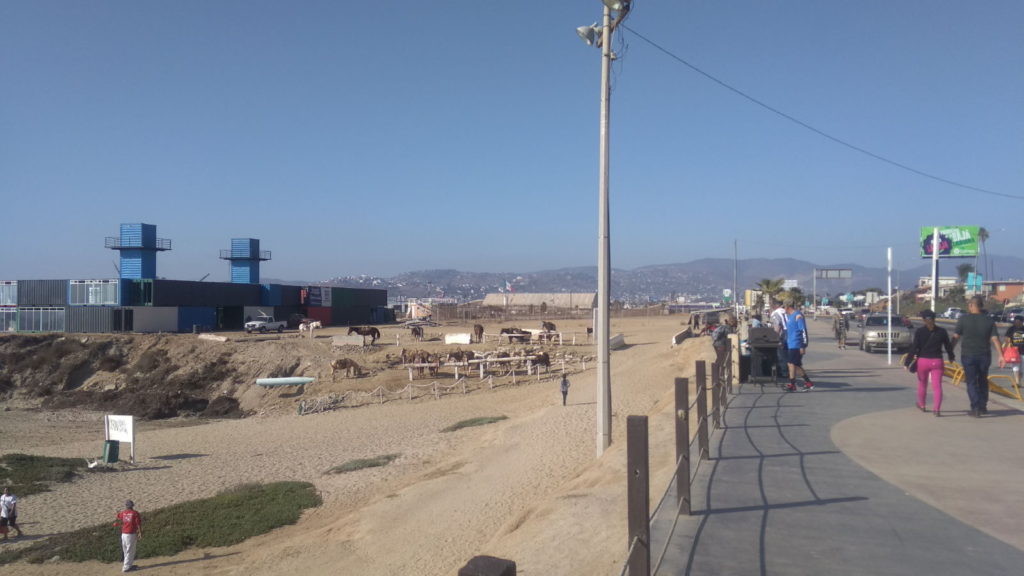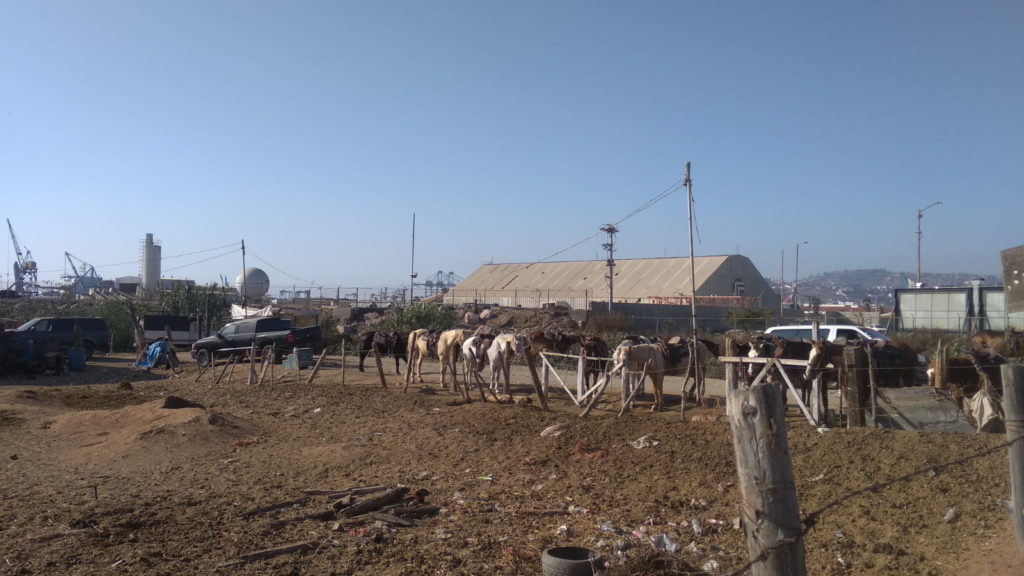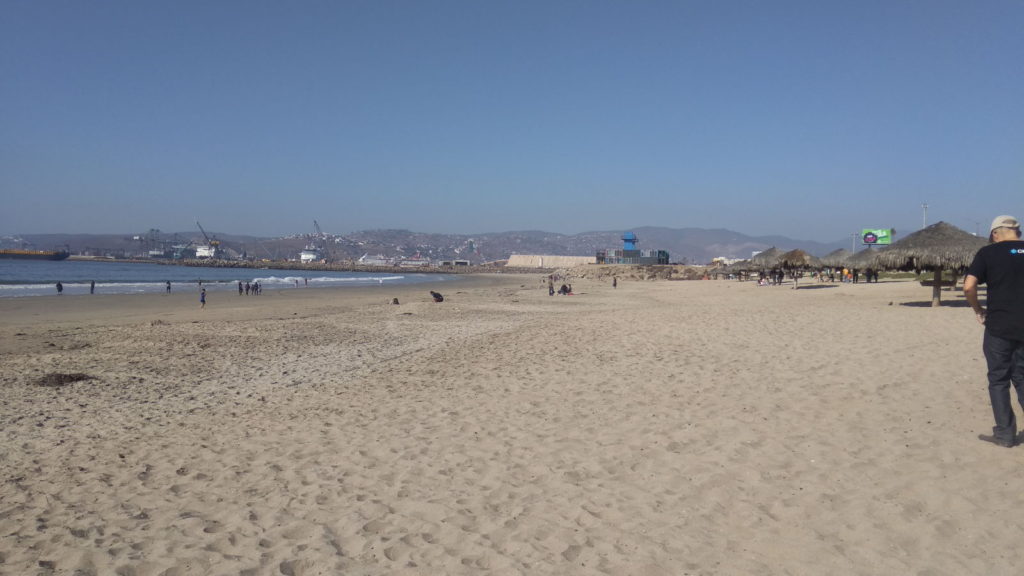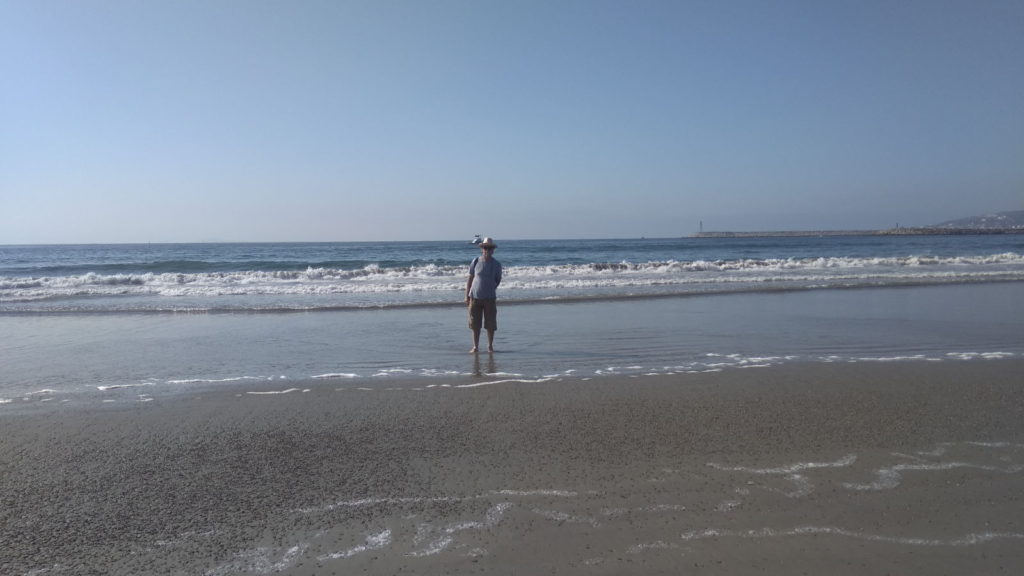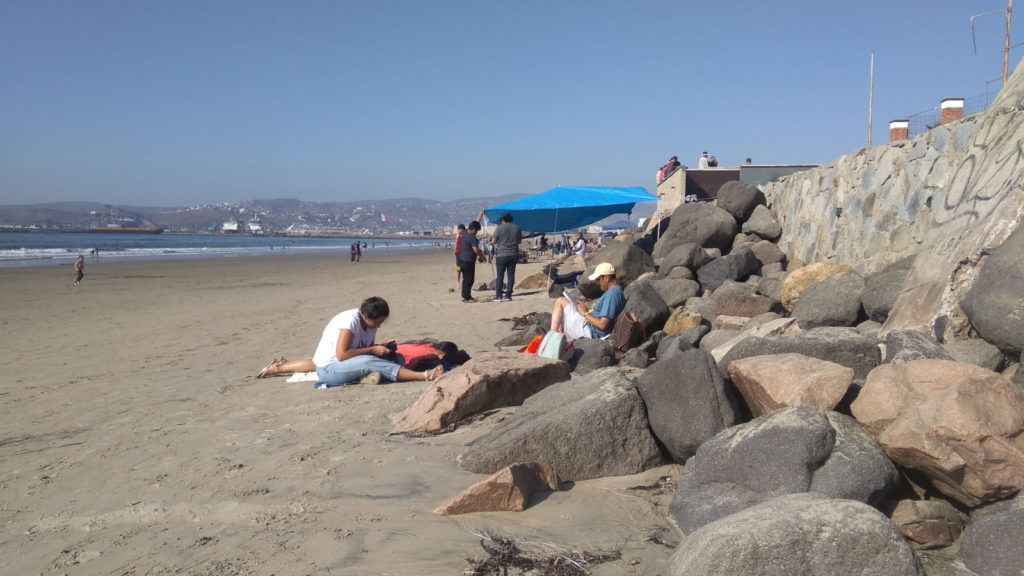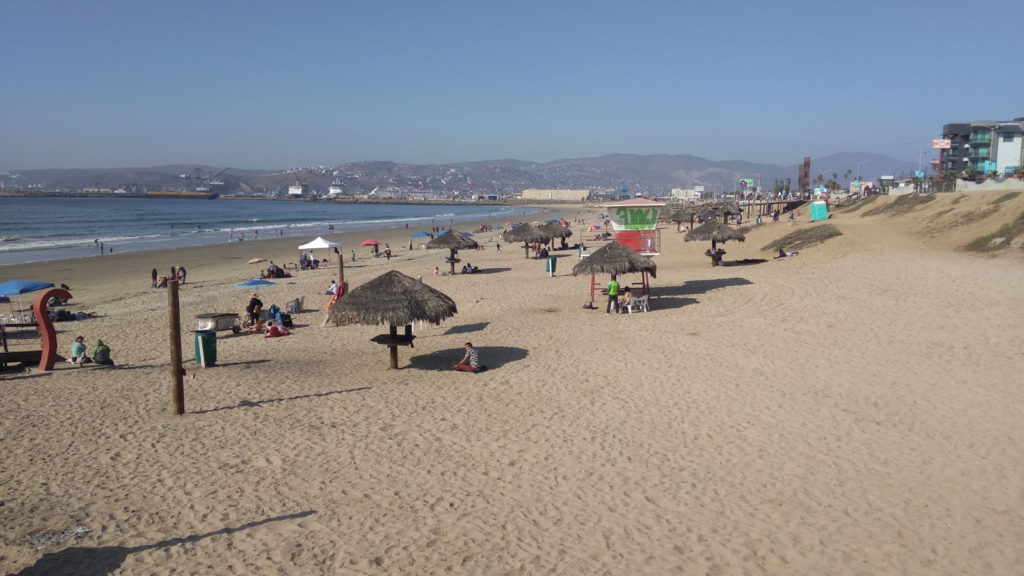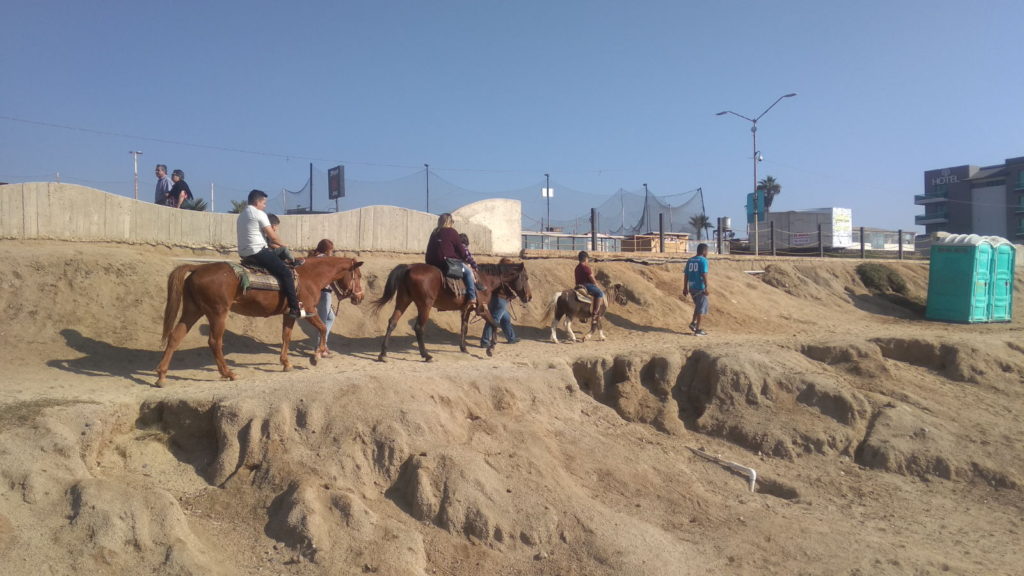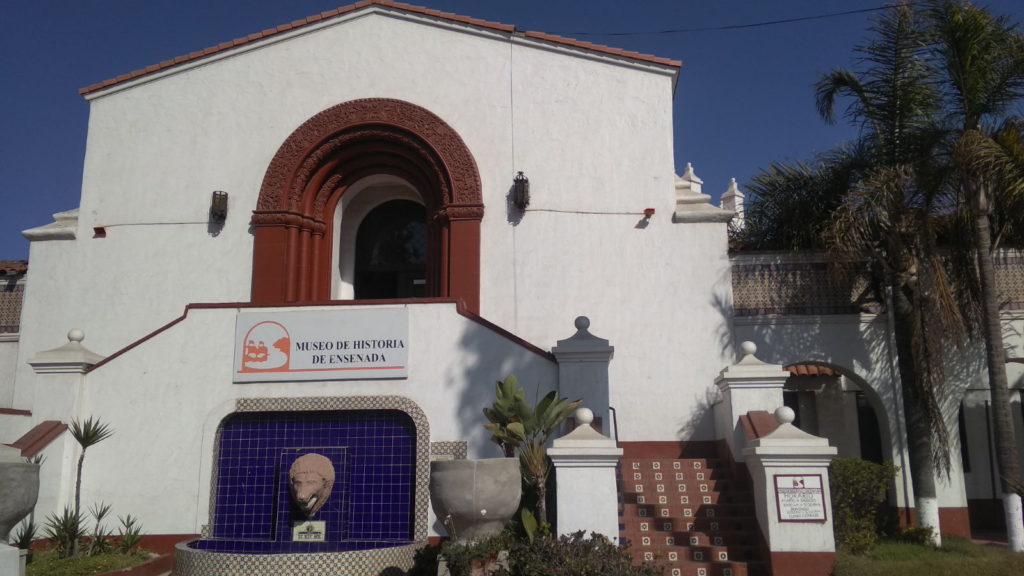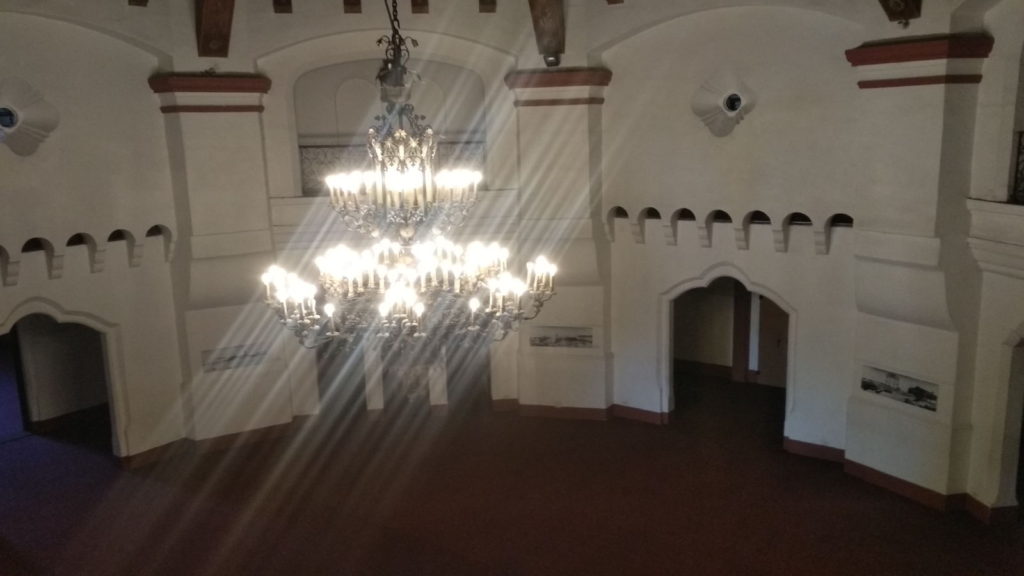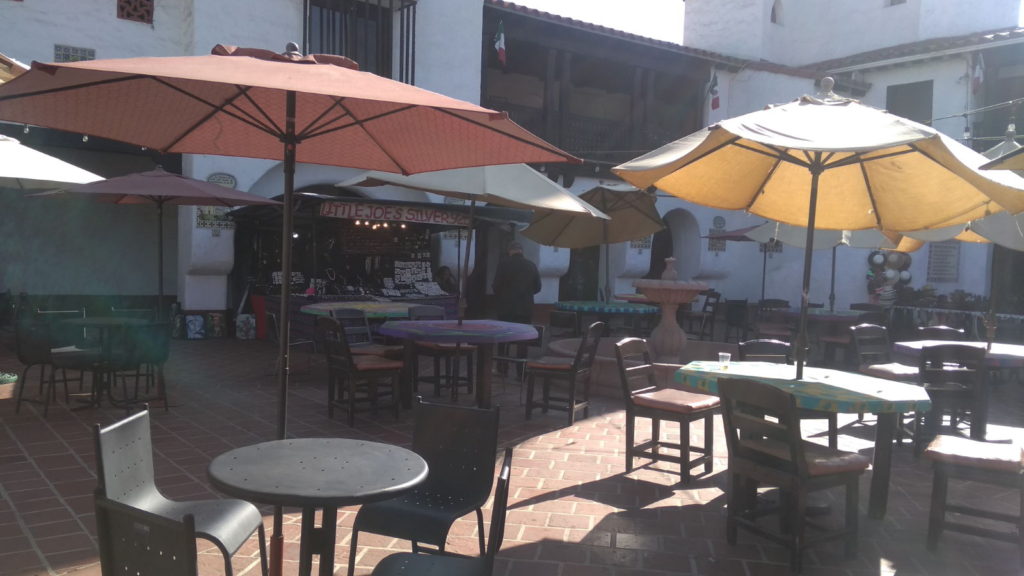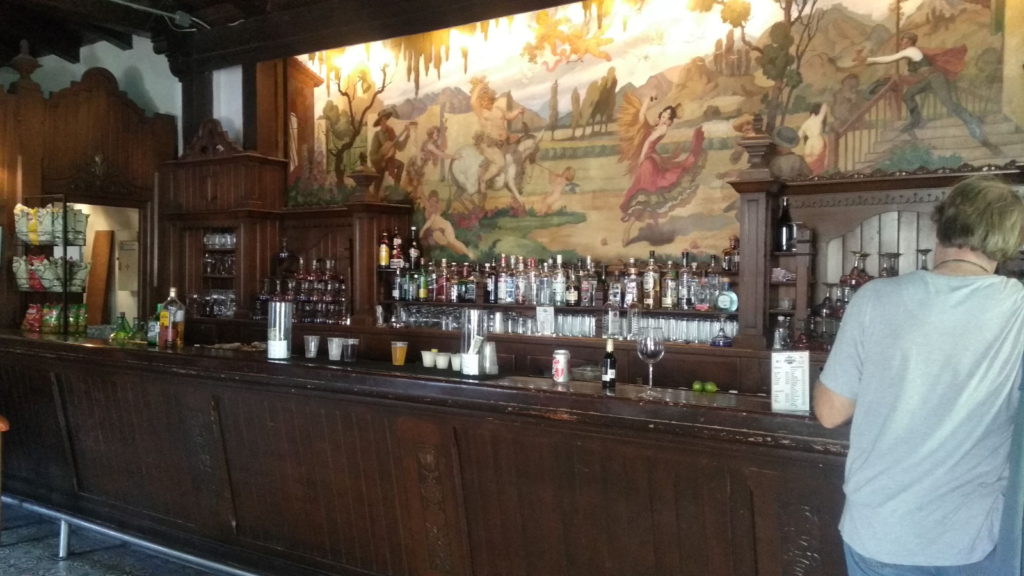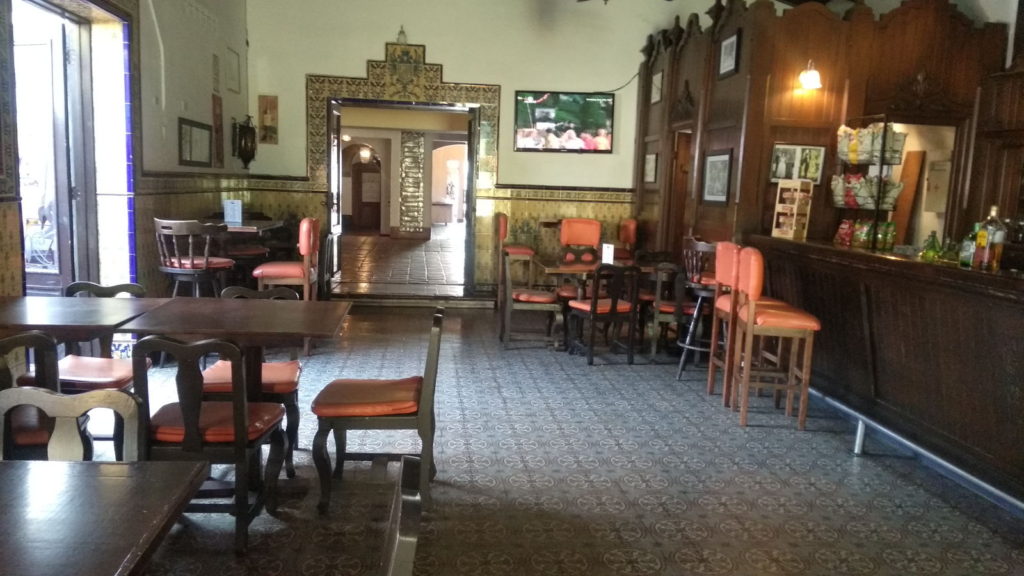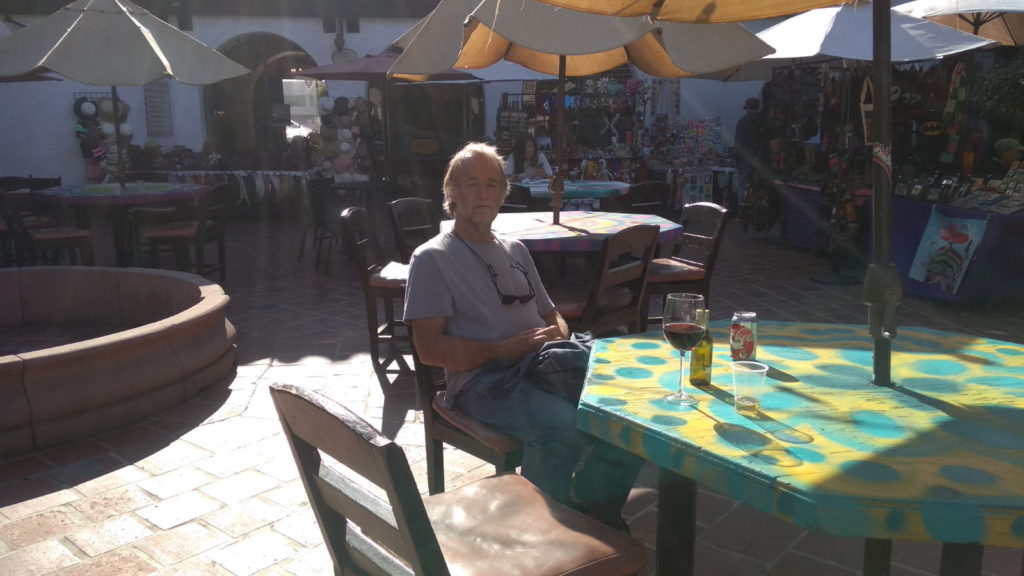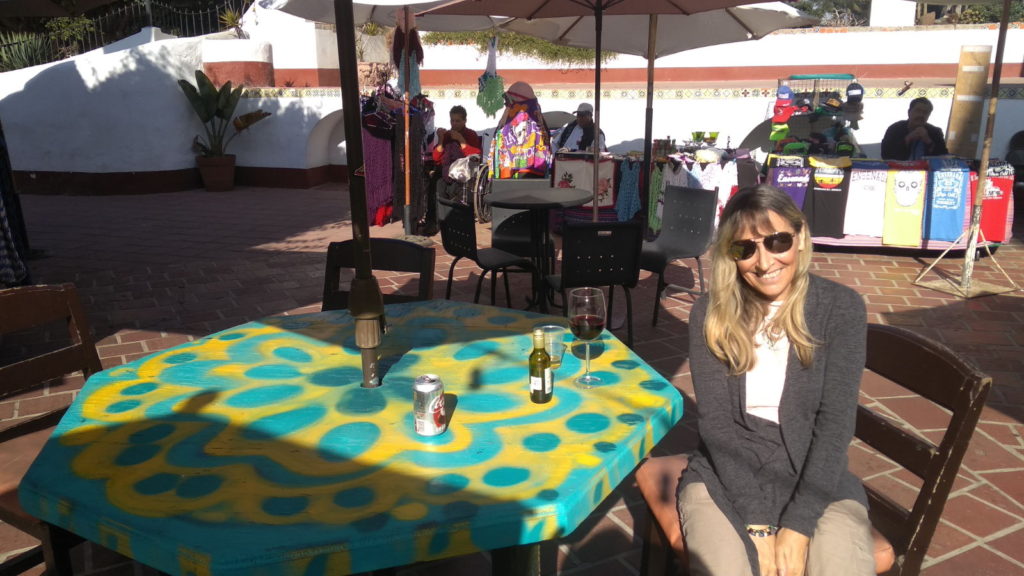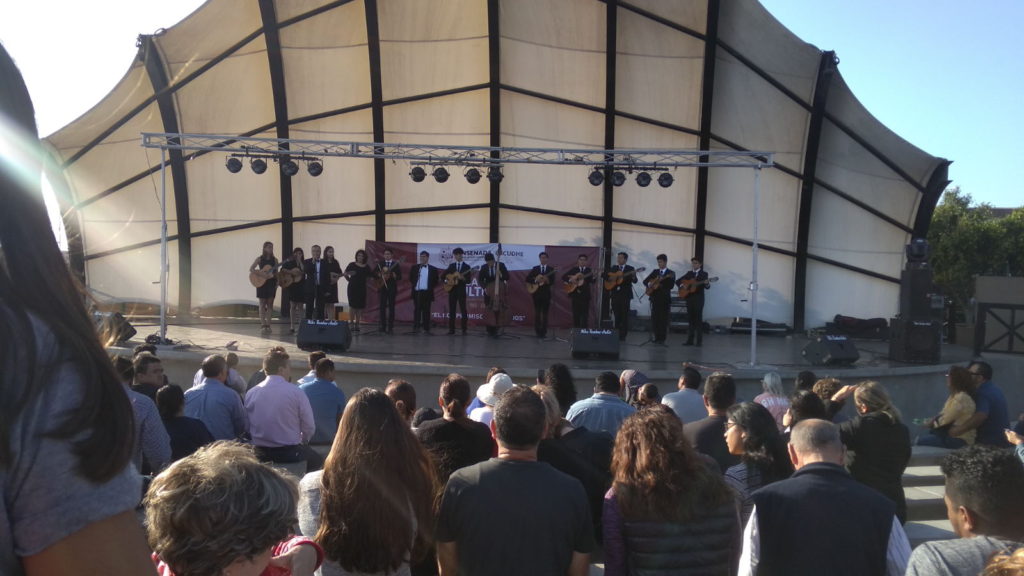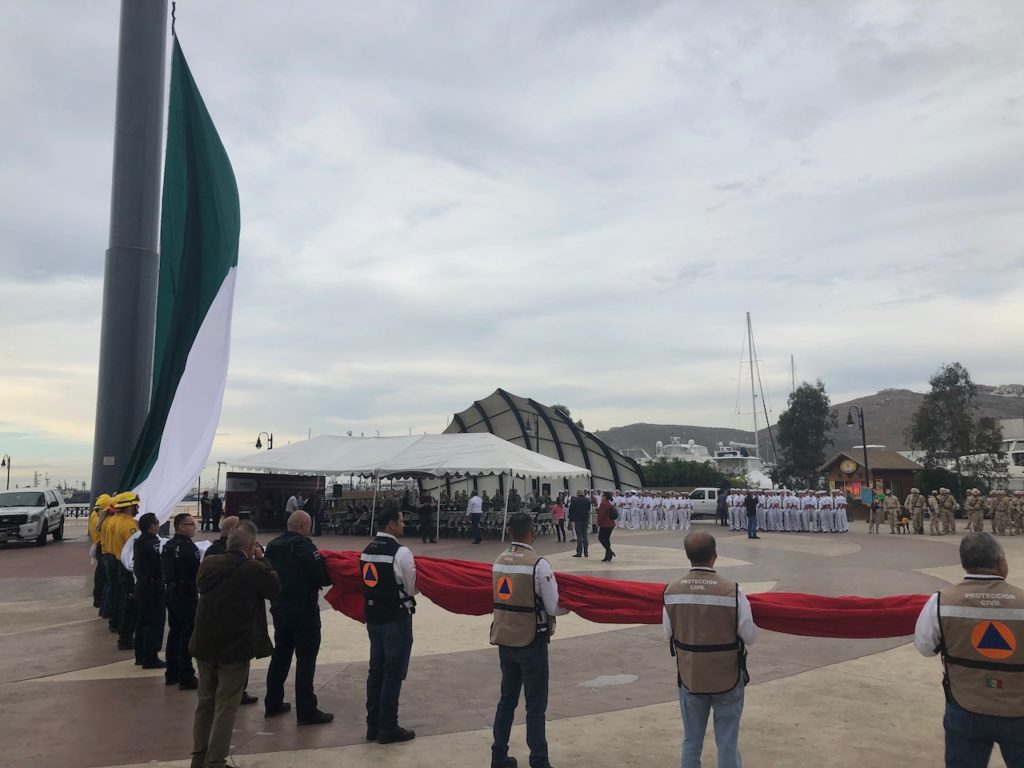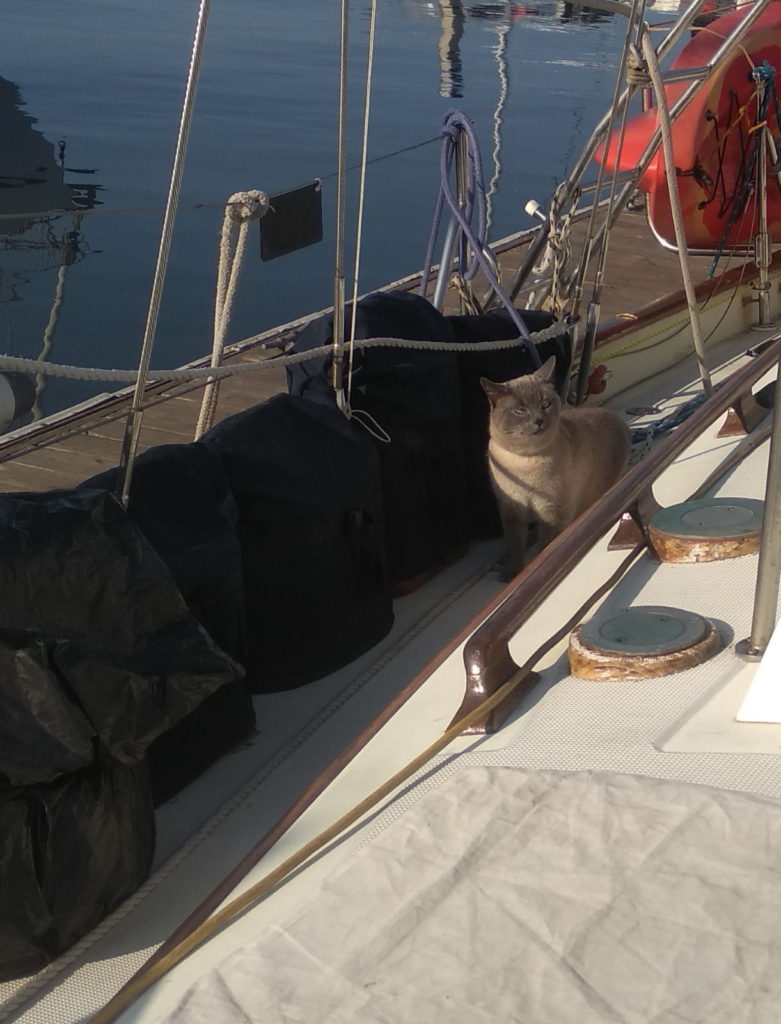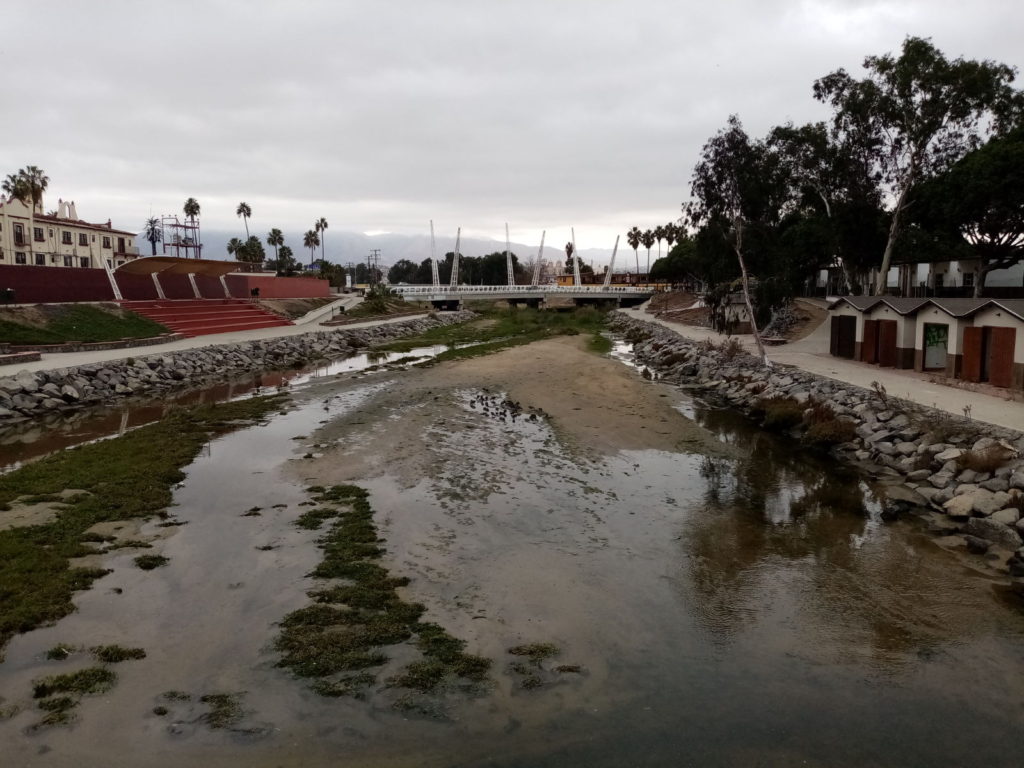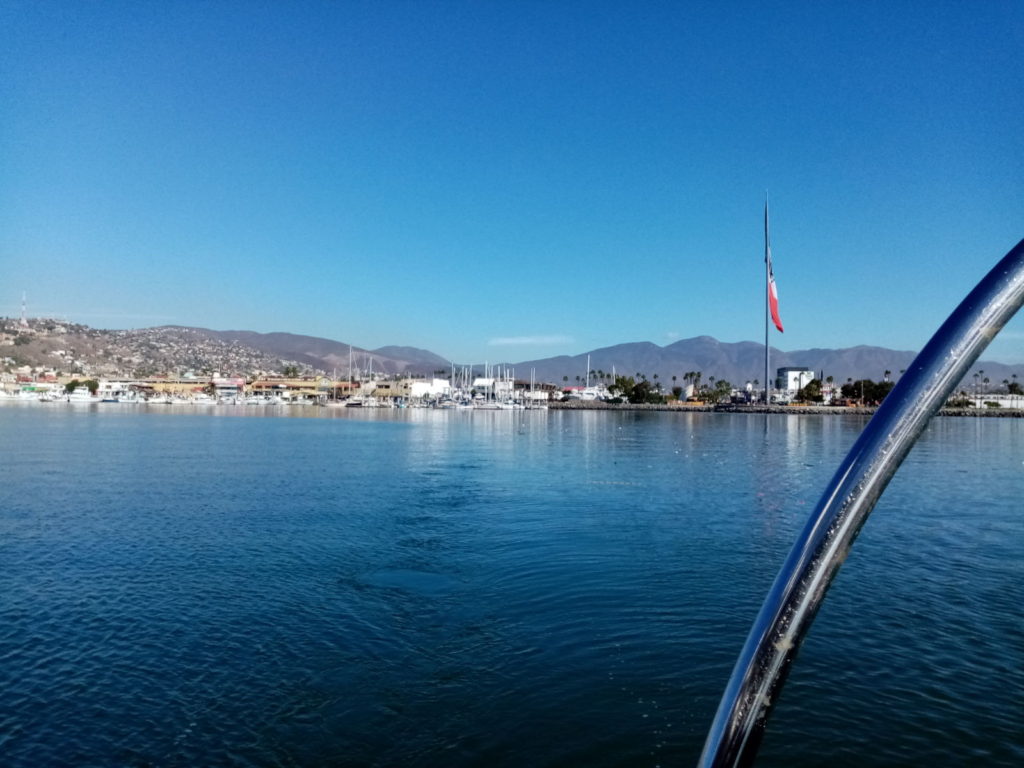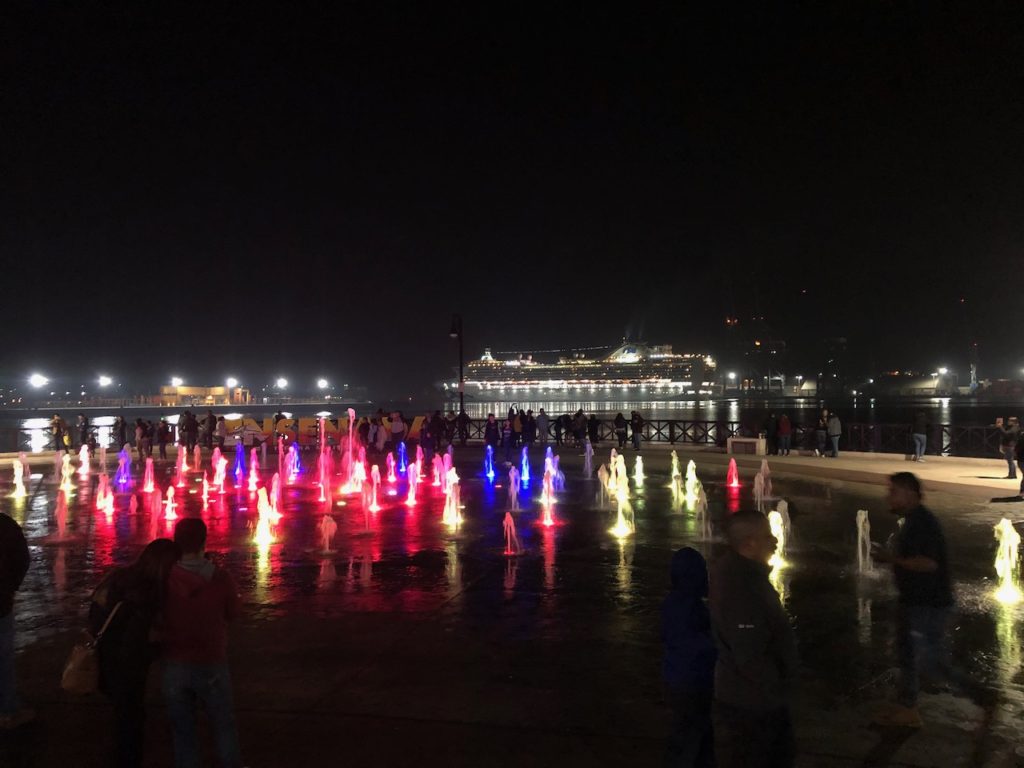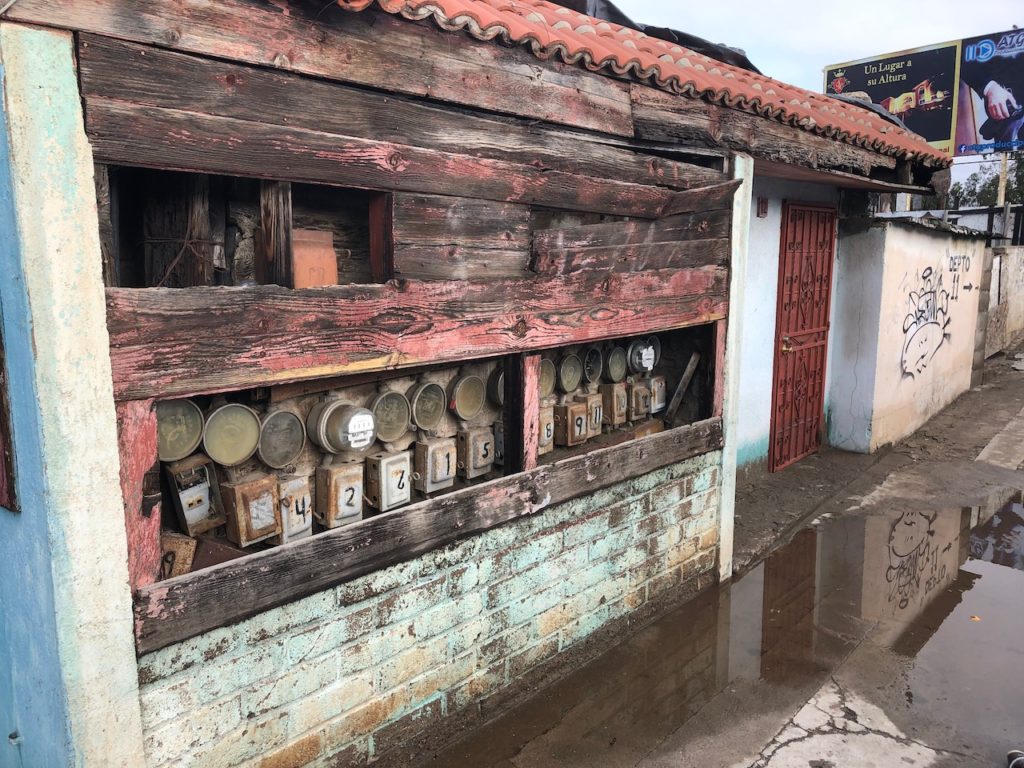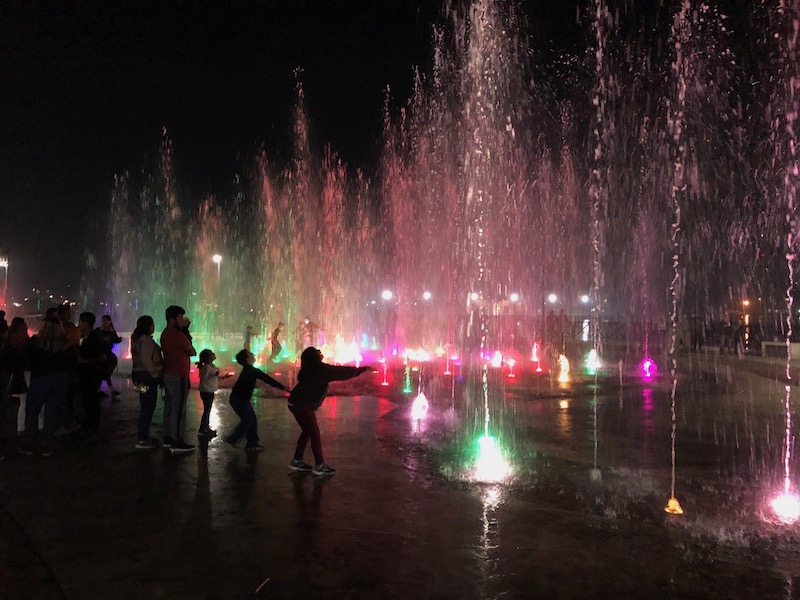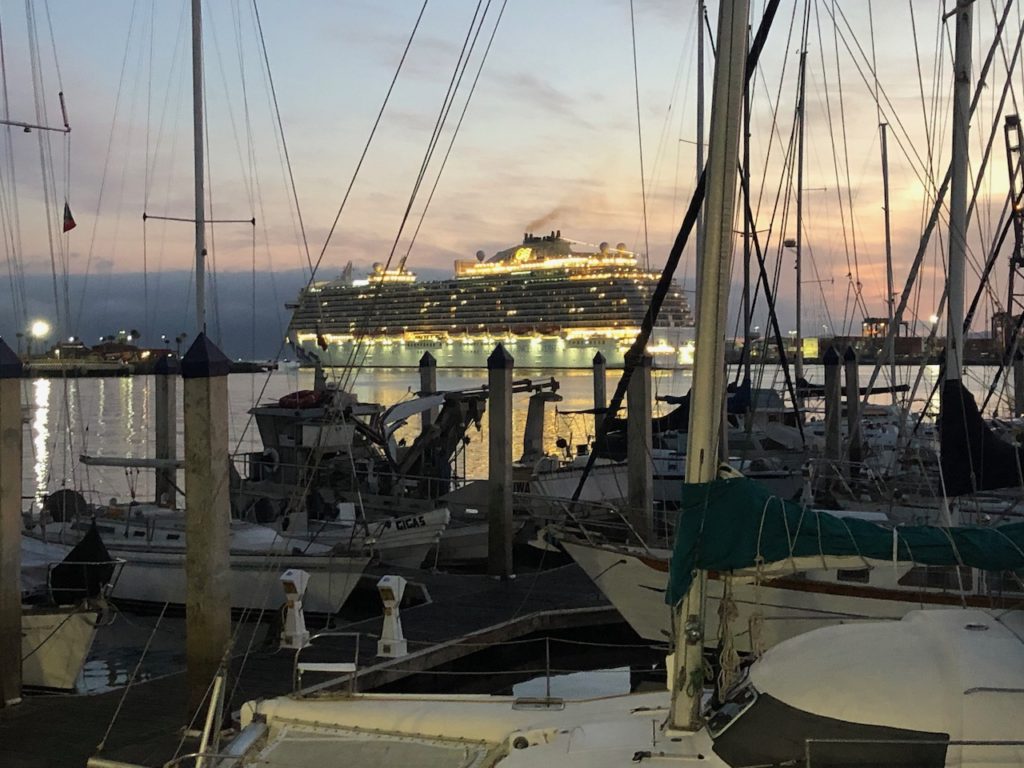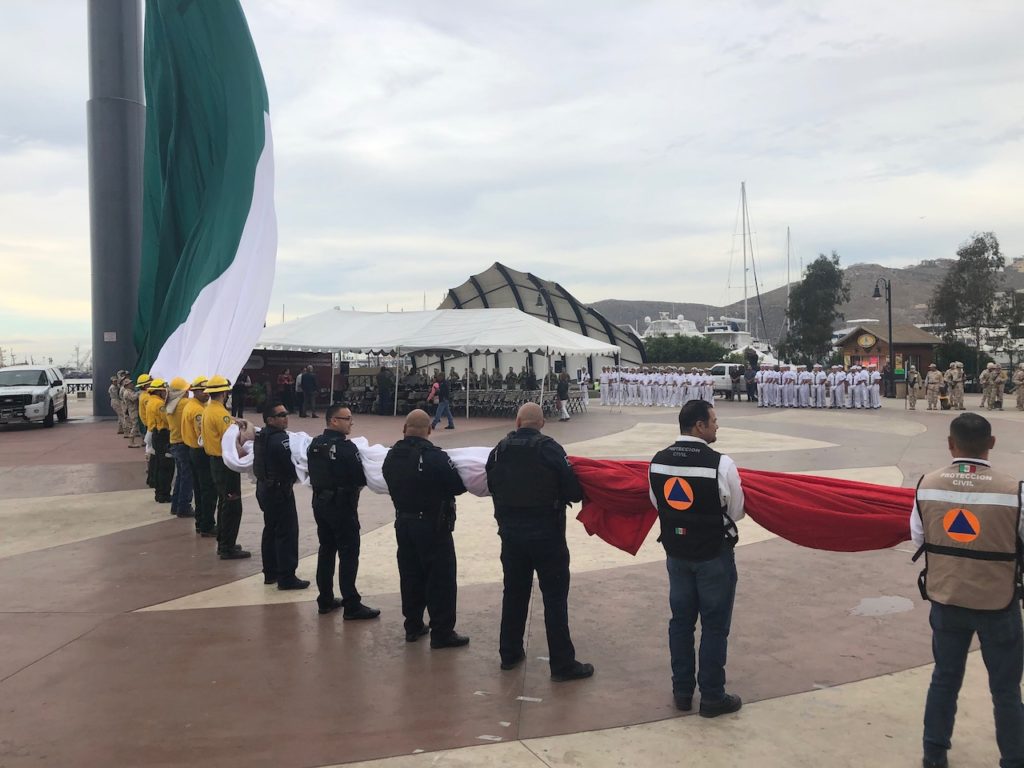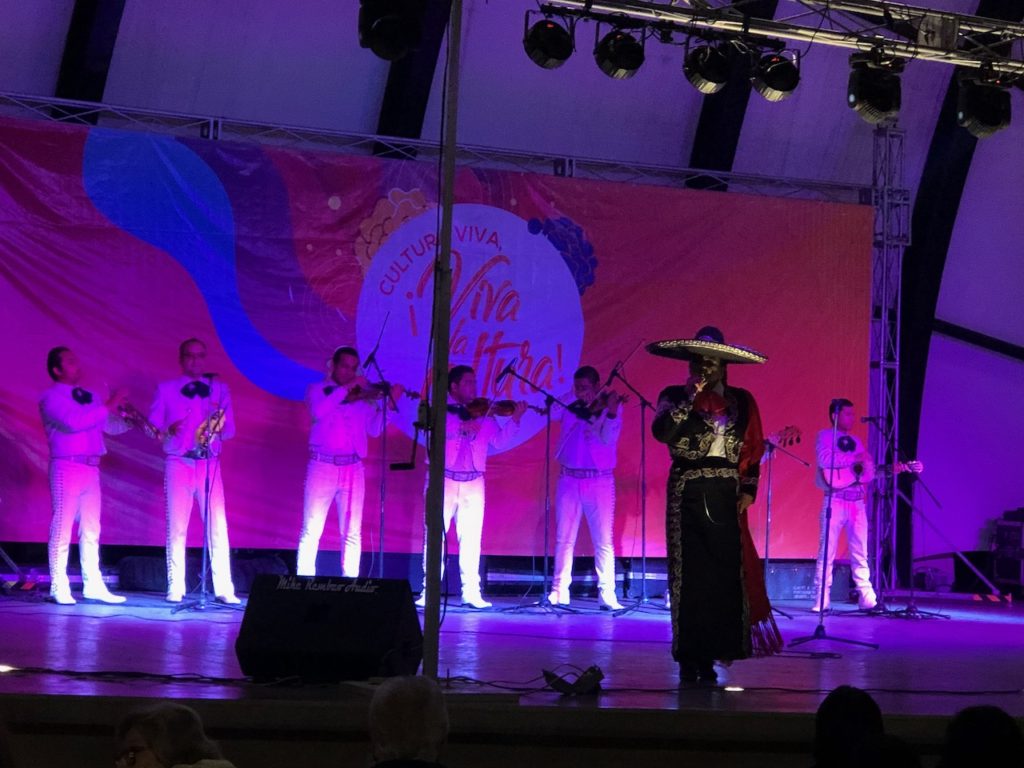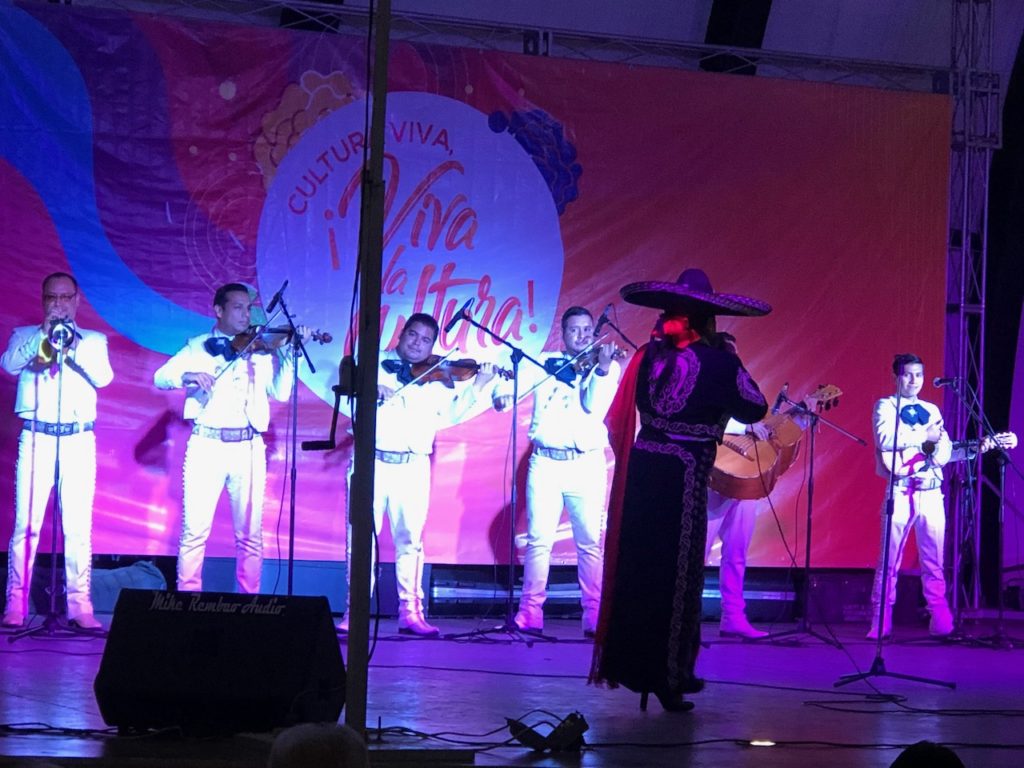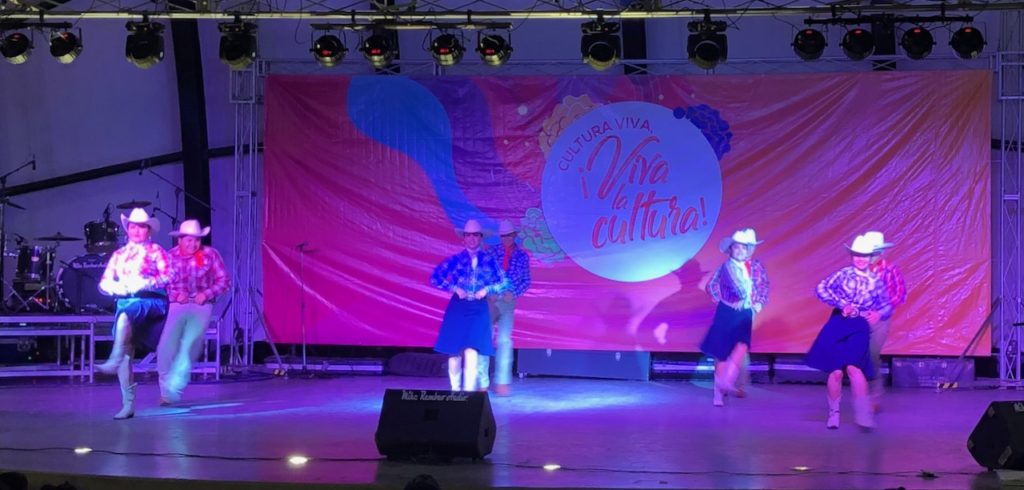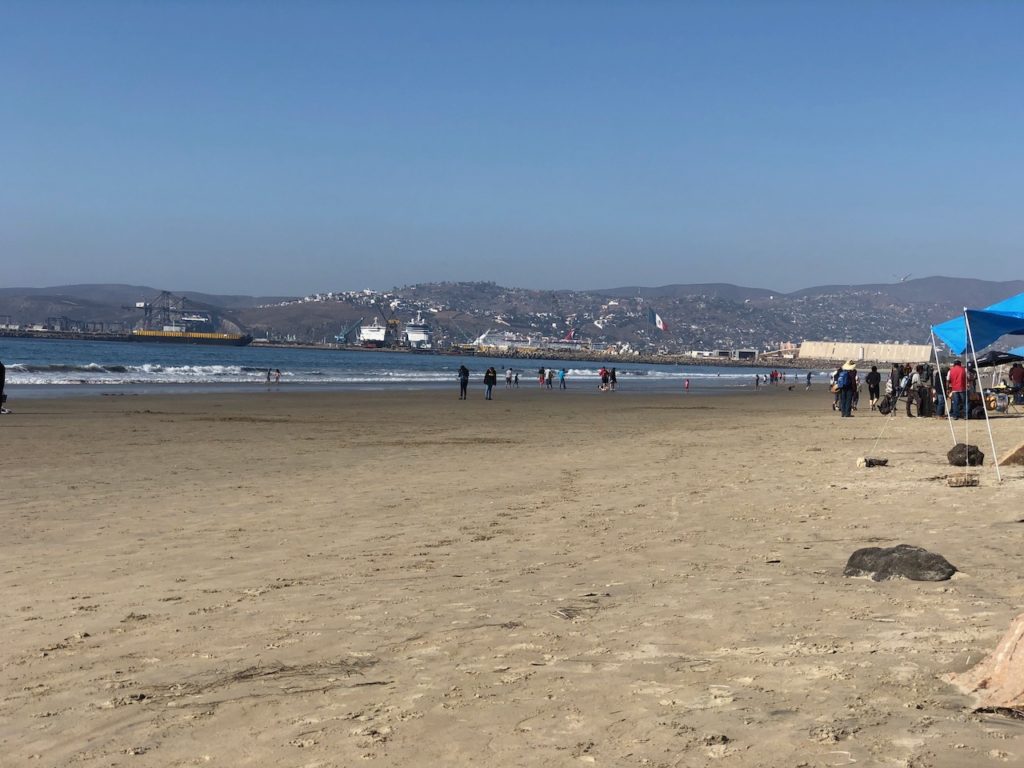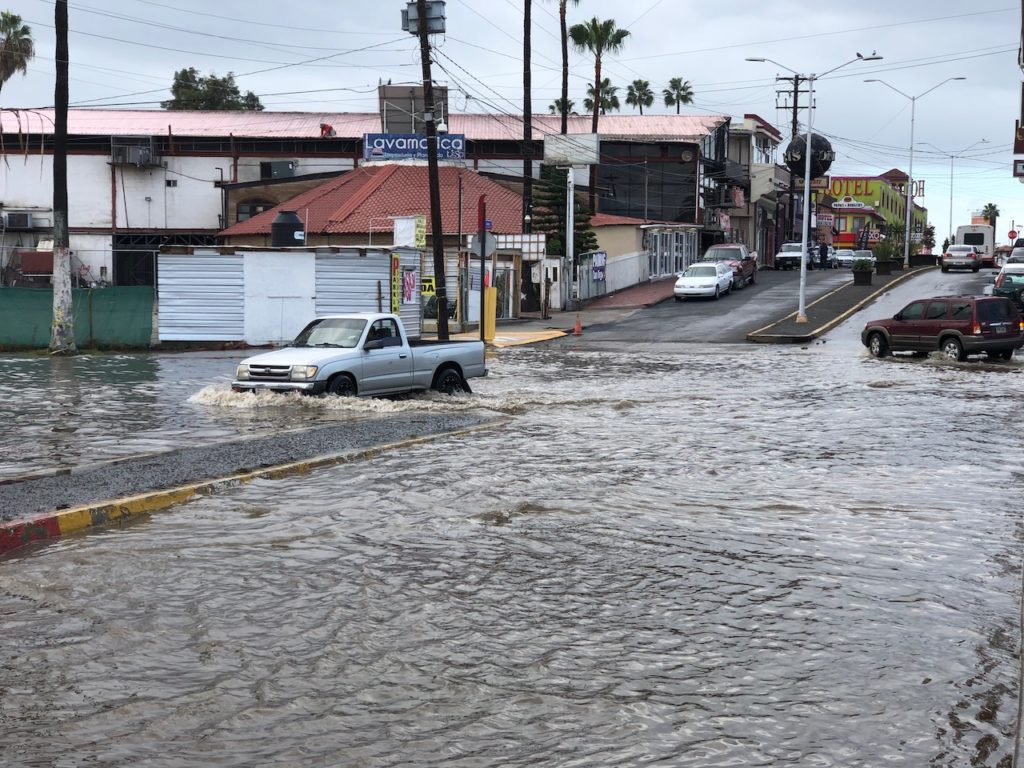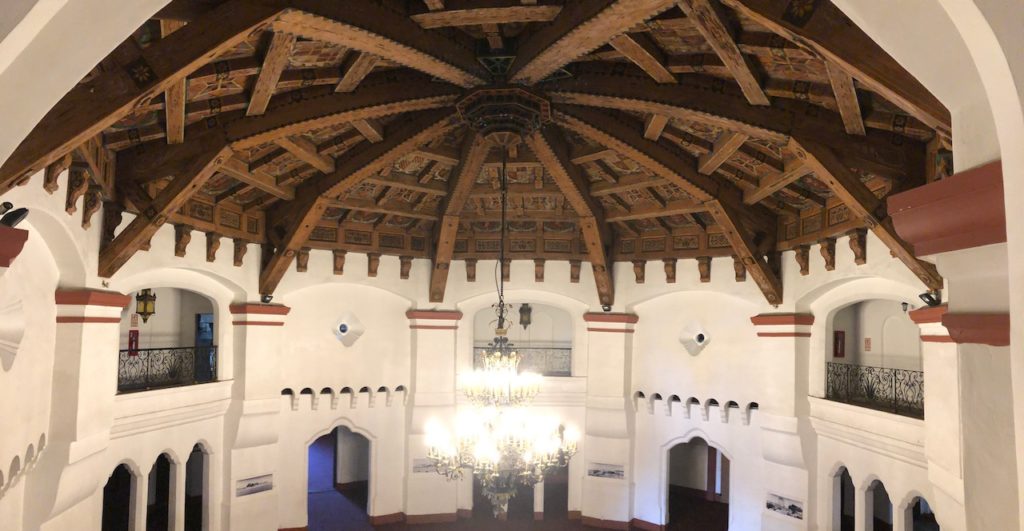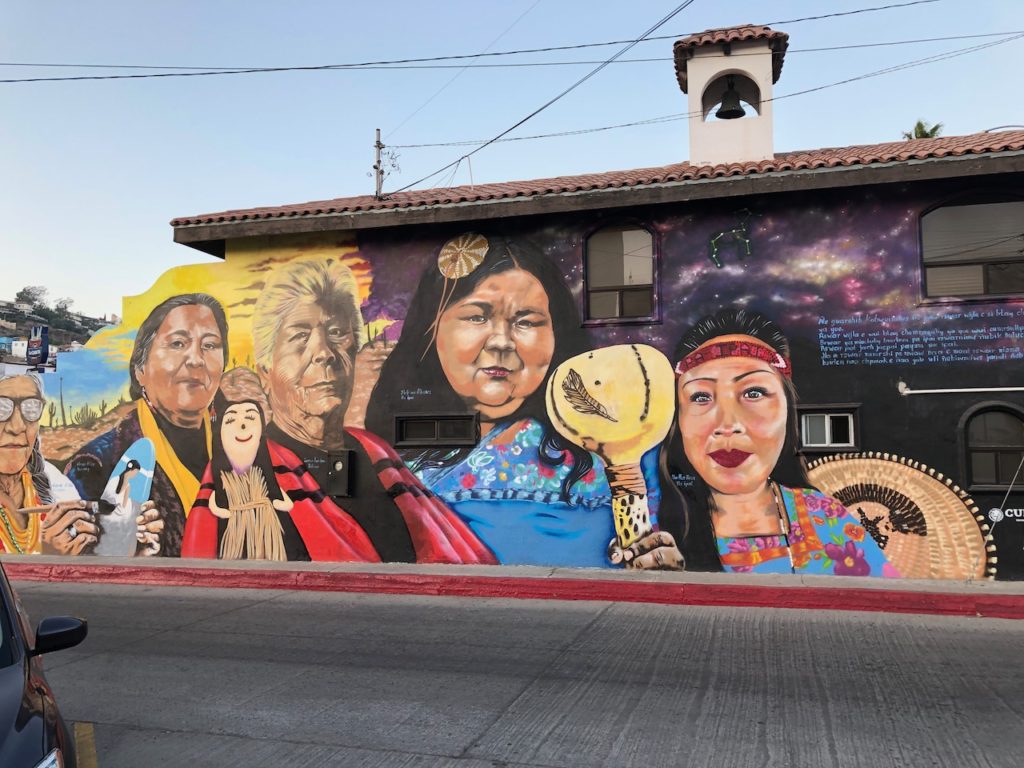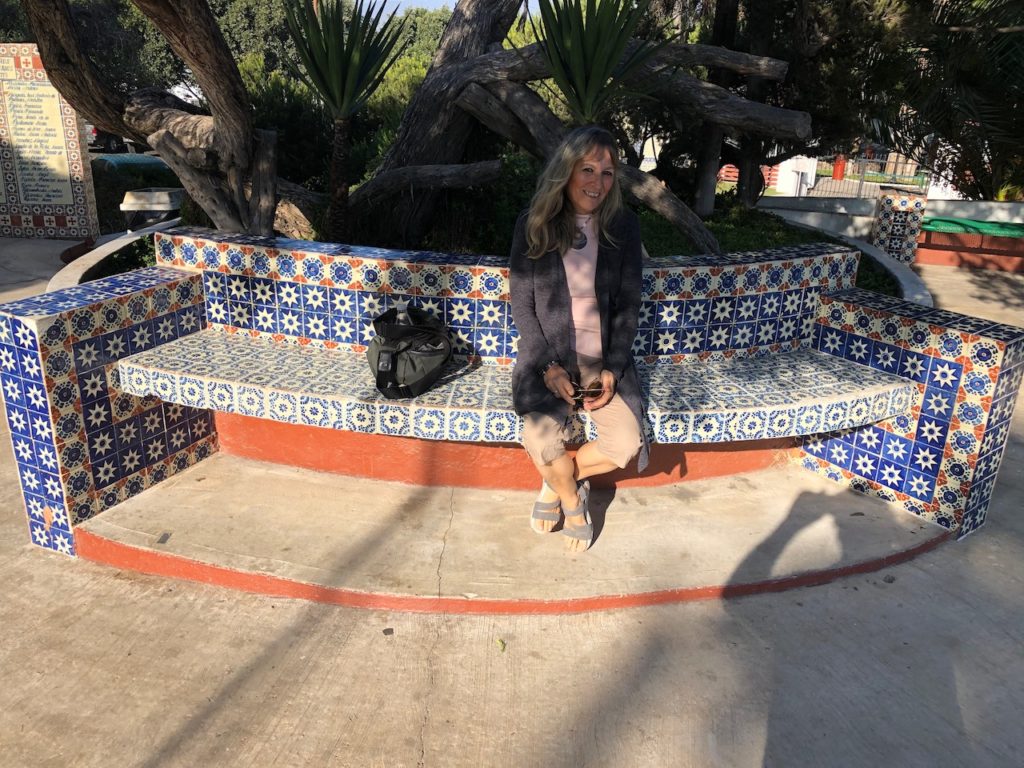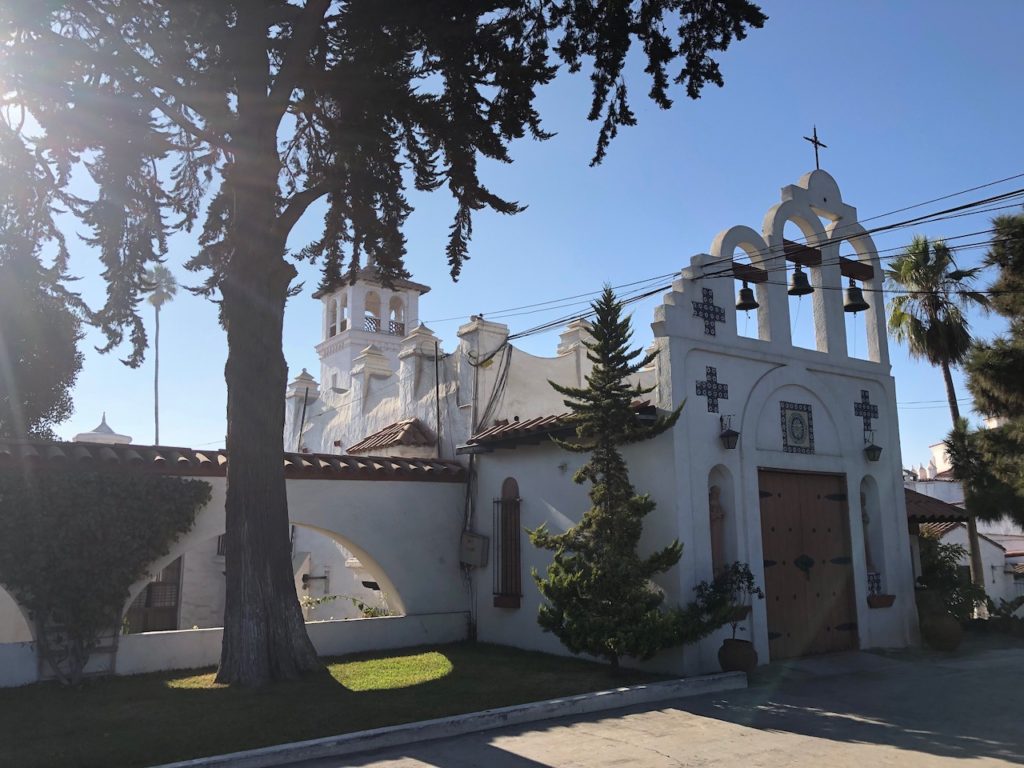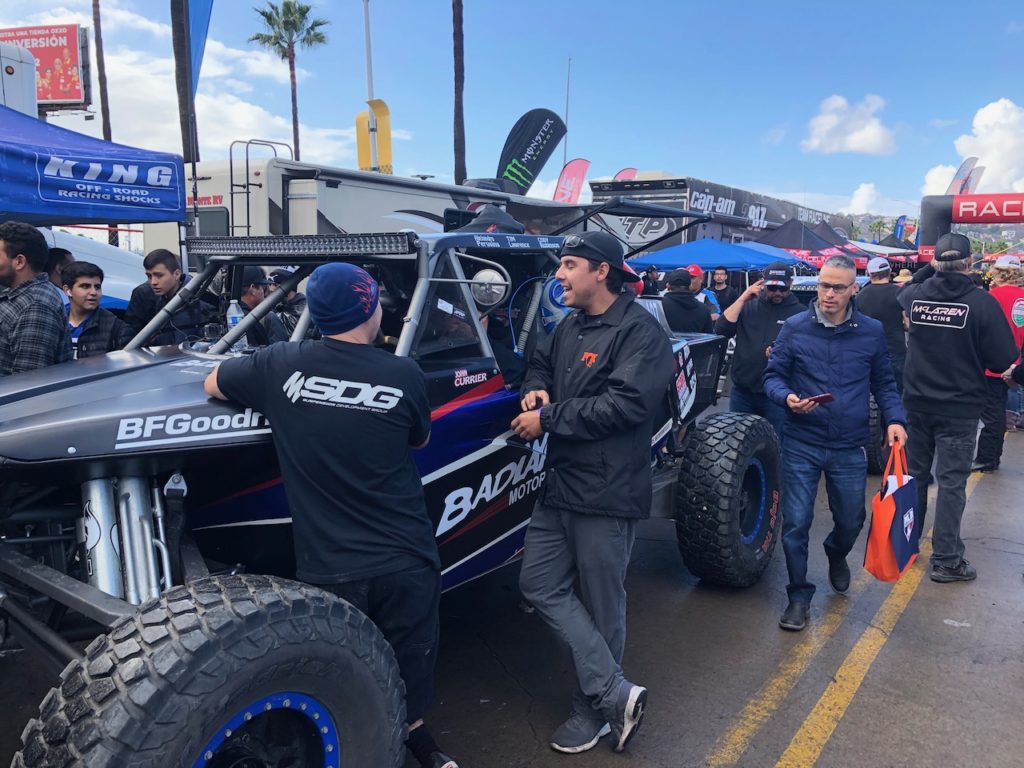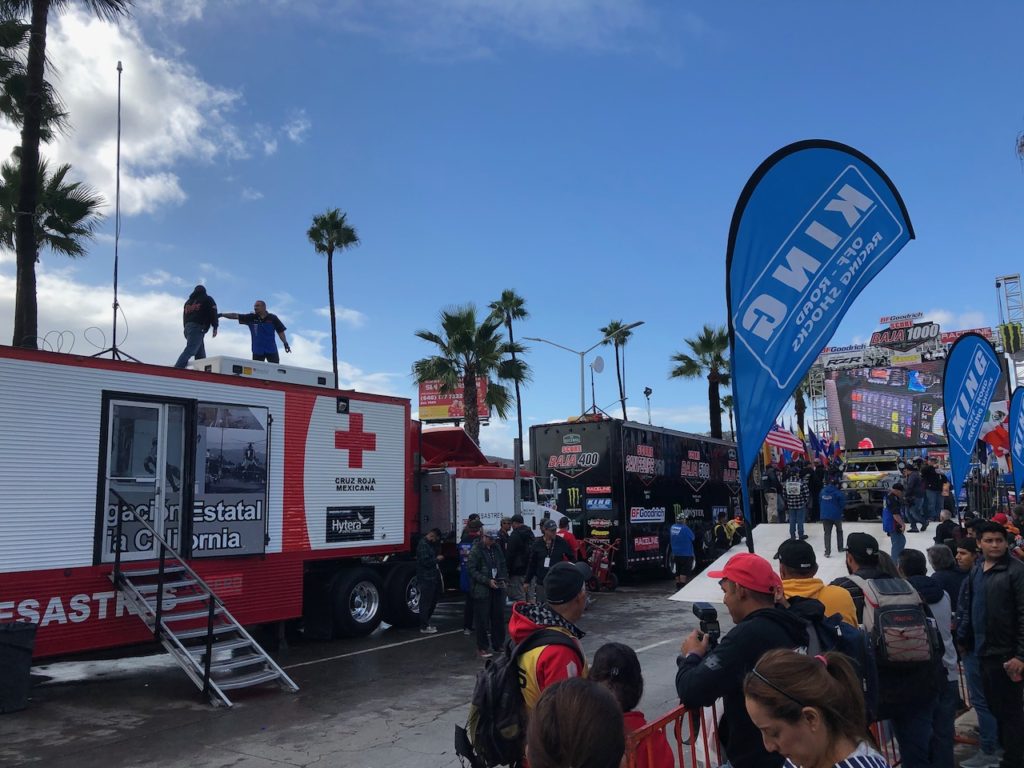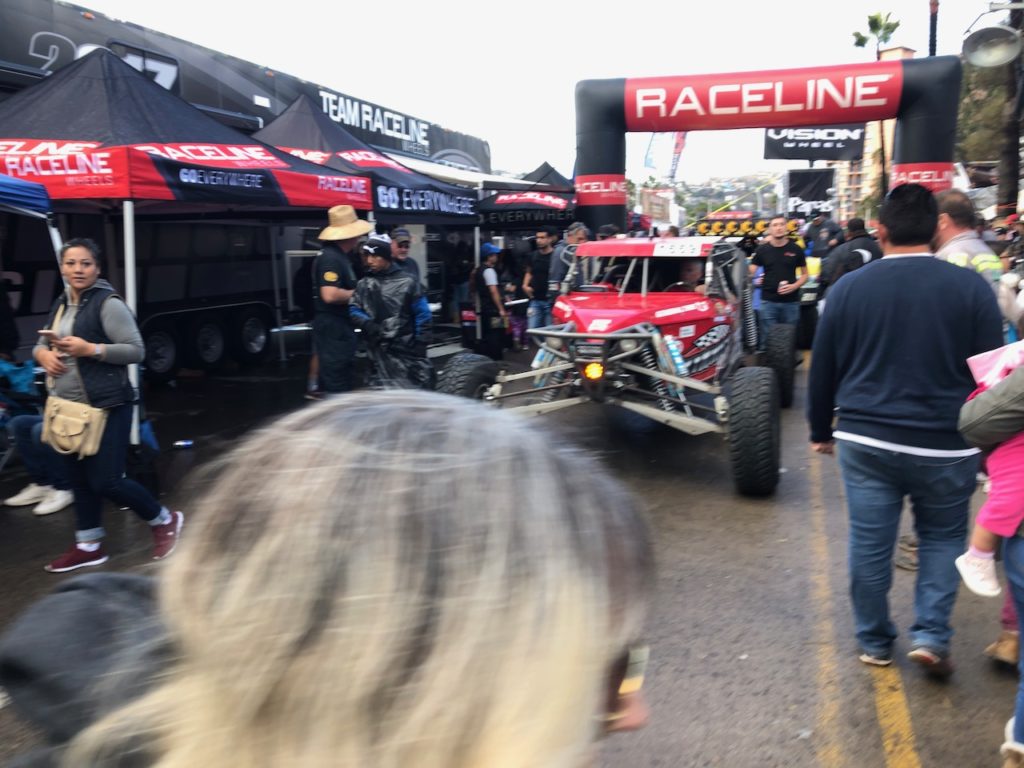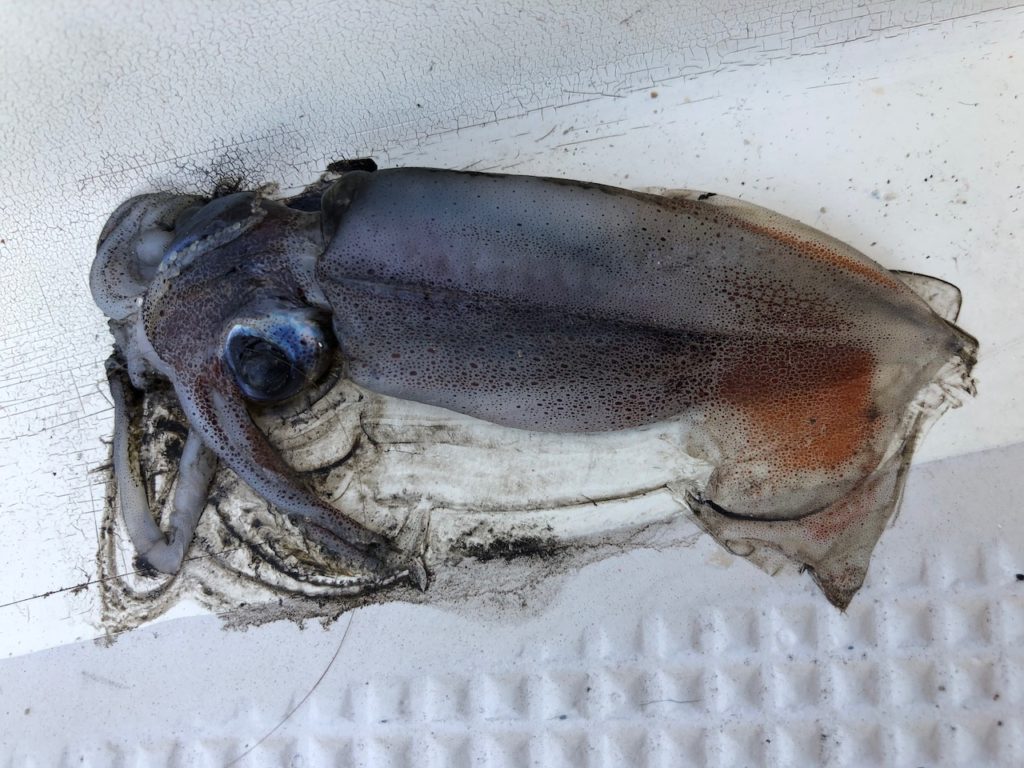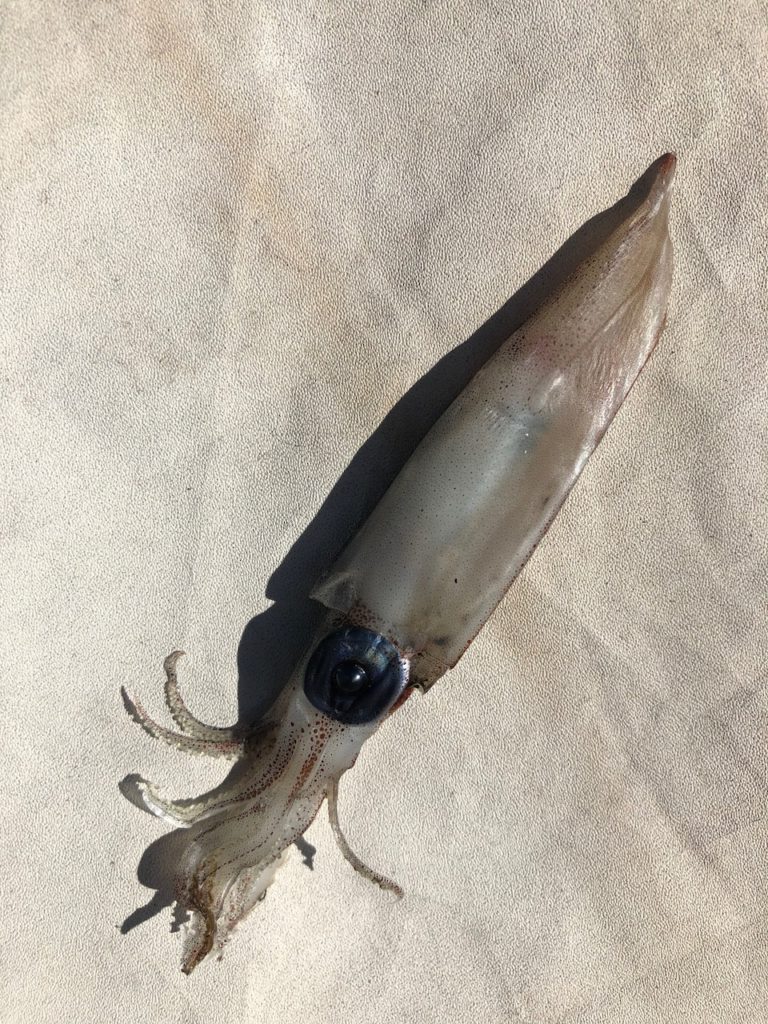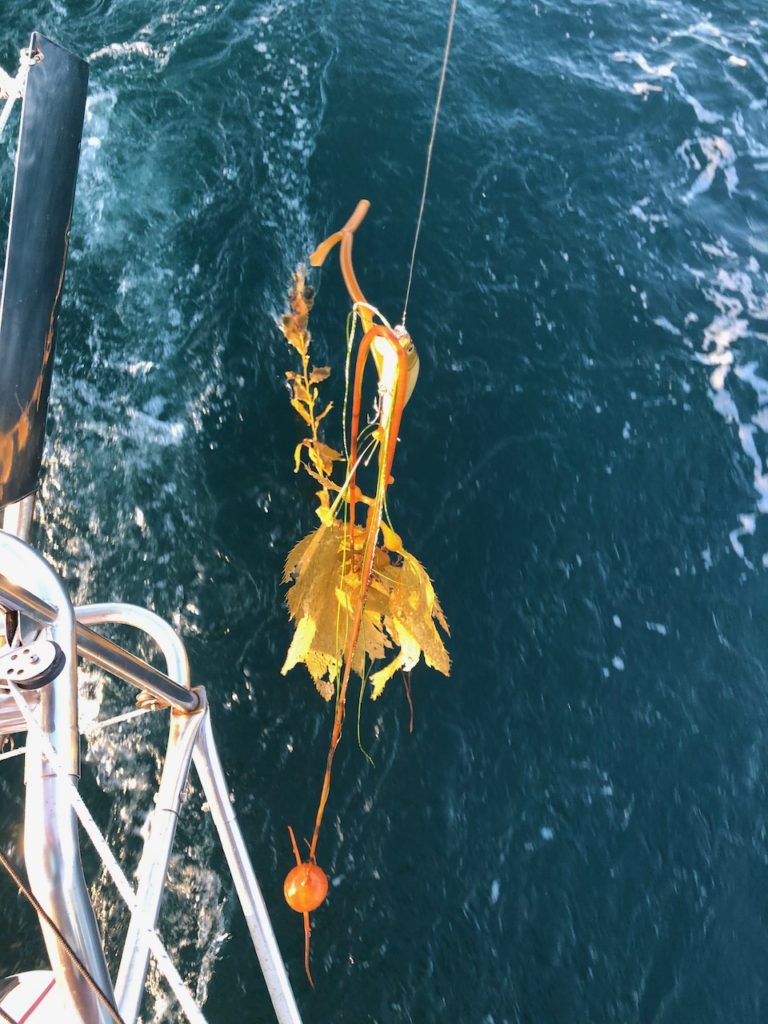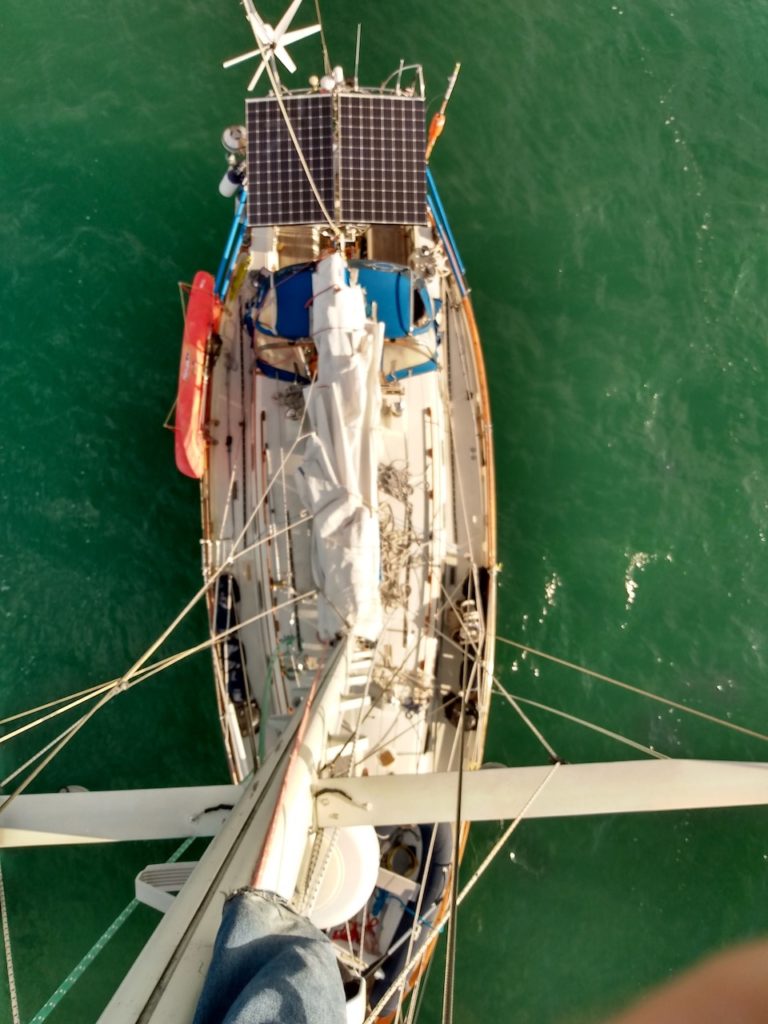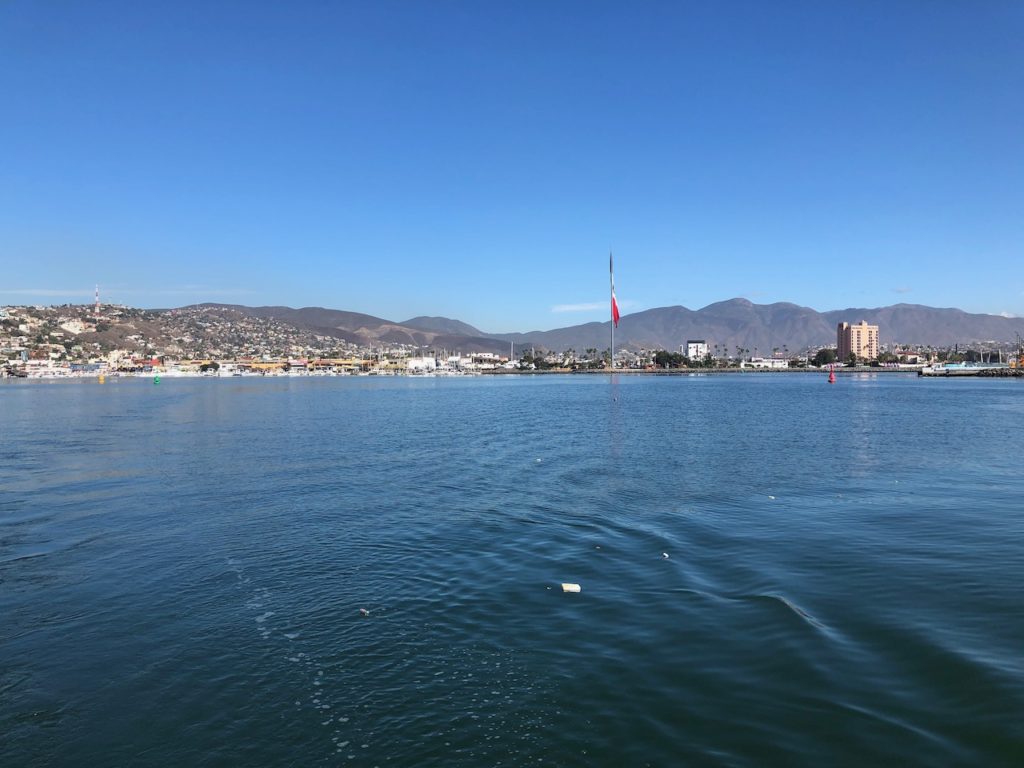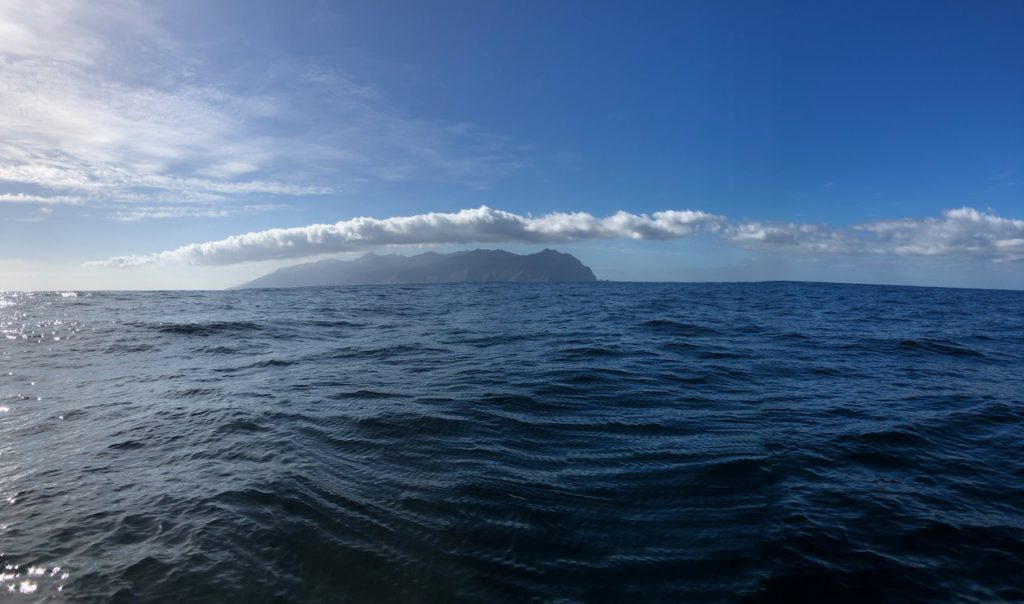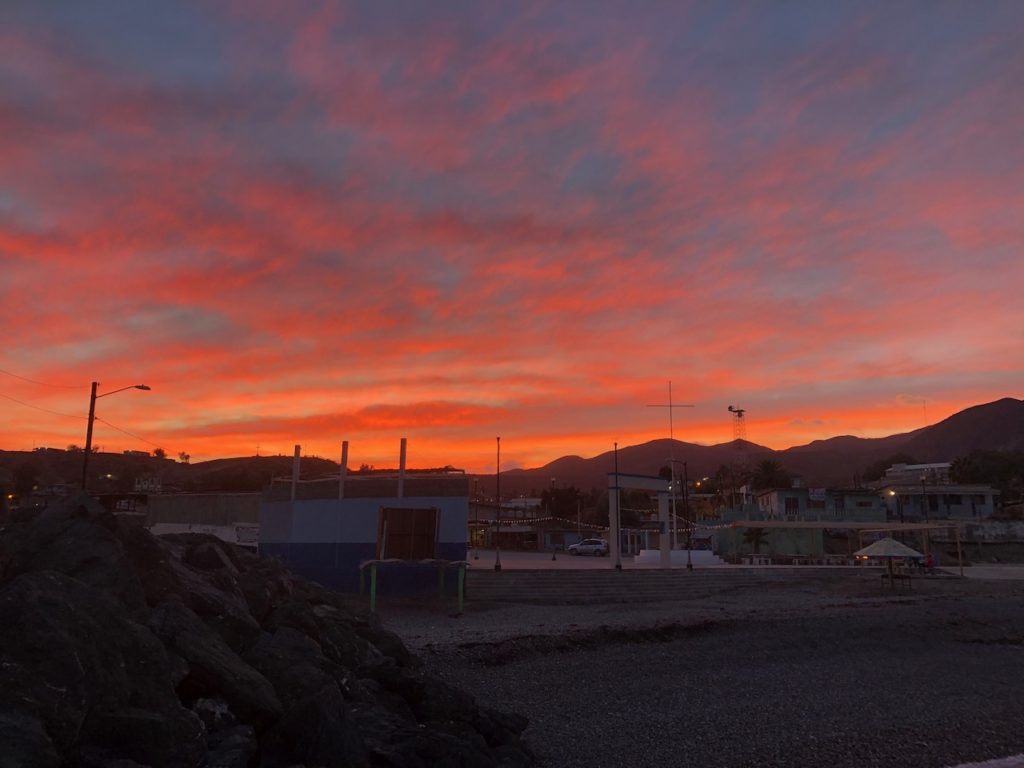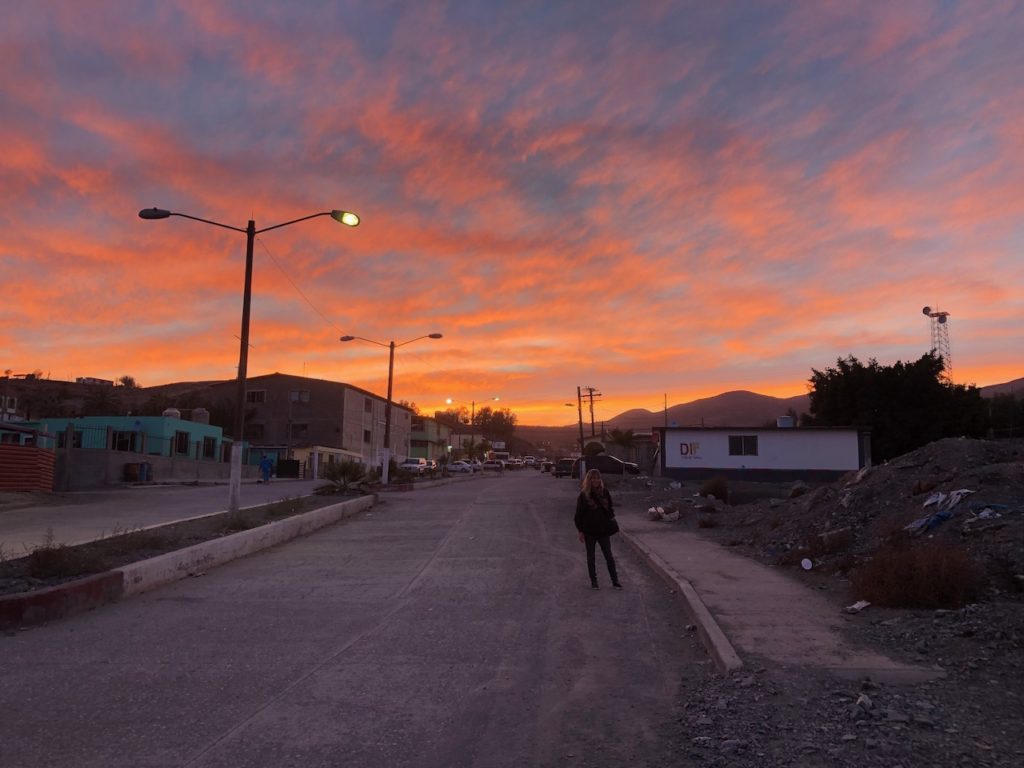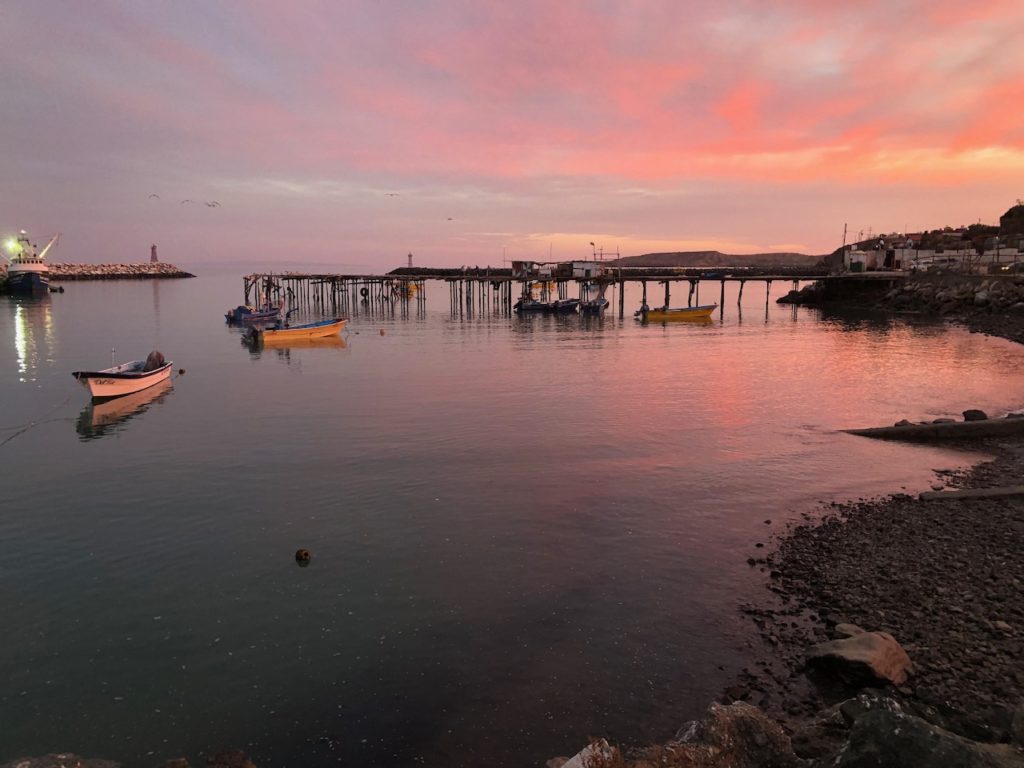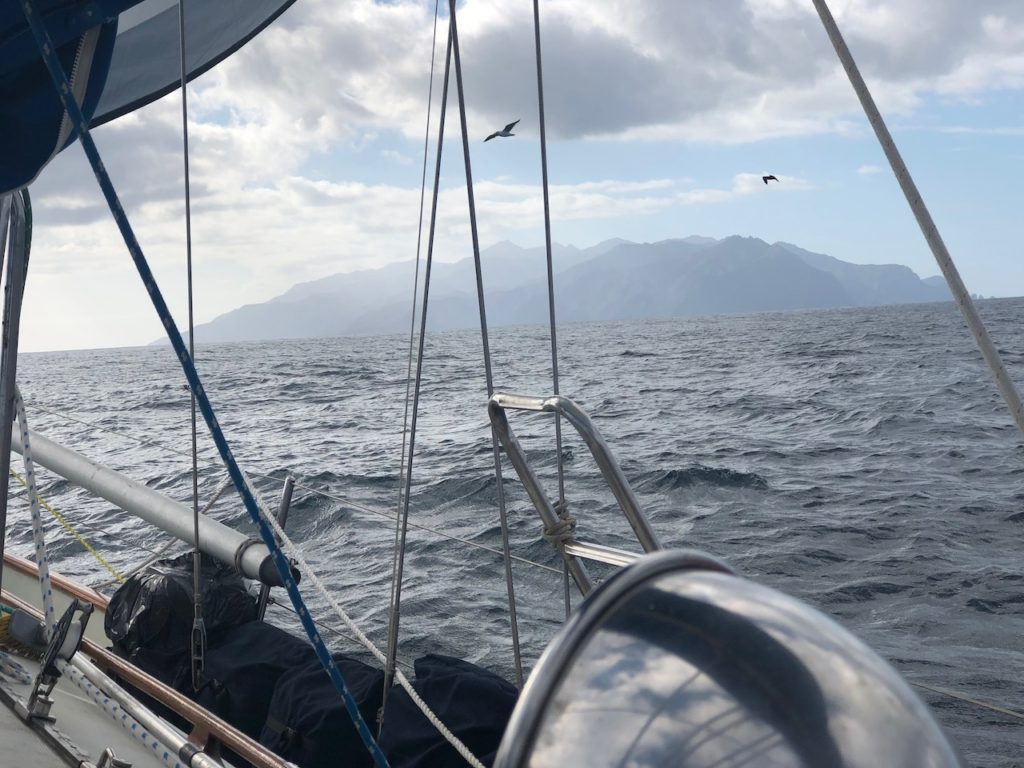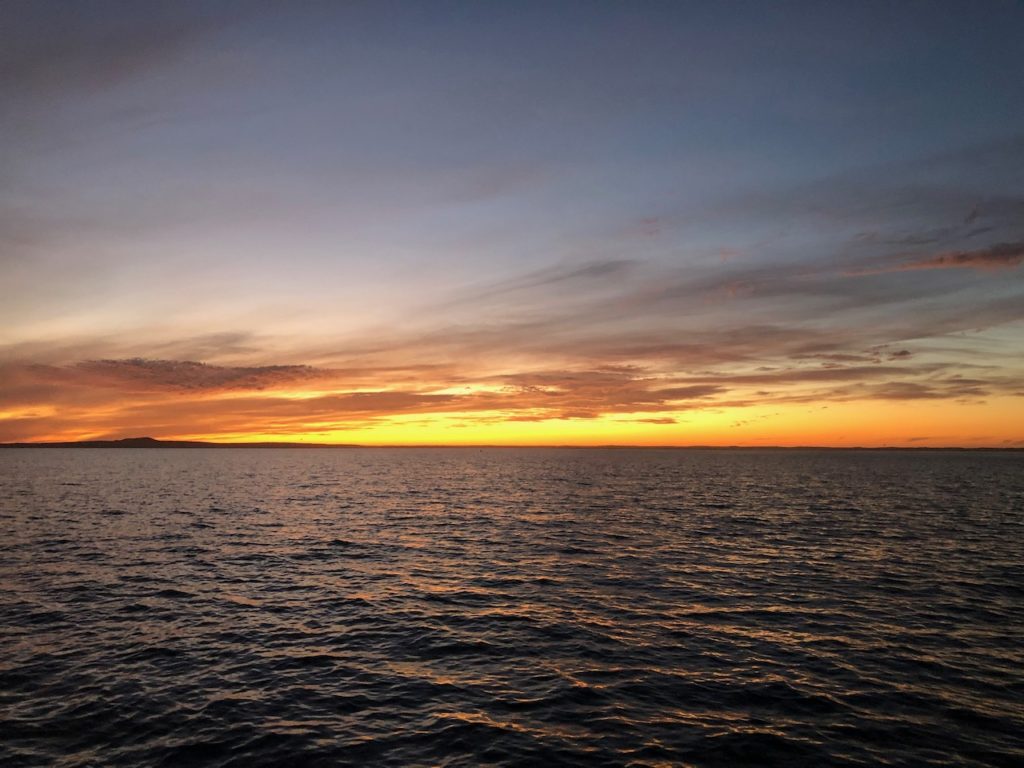Asuncion was touted as being a step up from Turtle bay, so it was with great anticipation that we prepared the dinghy for our trip ashore. Kathy was a little nervous due to the roar of surf breaking on the beach, but I assured her that it sounded worse than it was, and with careful timing we would get ashore without any issue. We wanted to find an internet cafe, or some wifi so we could attend to various tedious matters that were pressing back home.
So let me paint two somewhat different perspectives on what happened next, see if you can work out who is who.
1) Great we’re off to town, might get some internet, and do some decent shopping. First get makeup on, look smart and get into the dinghy. Next thing it’s as if someone has jumped out from an alley, and thrown an icy bucket of water all over your head, then they are pushing you into a swimming pool backwards. Not much fun.
2) Wow were off to explore a new place, and we get to go in the dinghy, brilliant, big surf, exciting, wonder if we can ride a wave right up the beach, better just wear swimming trunks, with any luck I can have a little swim. Woosh, what fun.
Of course Kathy wasn’t happy when the big wave hit her full frontal, and then to top that there was nothing in the town of interest, the internet cafe had just shut and the shops were very basic. Still it was a pretty little town.
Abreojos
The next day we did a short hop to Abrejos, which means ‘open your eyes’ . The pilot guide says this is because there are many rocks and dangers on the route there. Our plan had been to find a local panga (Small run around boat) owner who could take us around the nature reserve lagoon where whales return every year to calf and nurture their newborns. However we were a few weeks early and the pangas were nowhere to be seen. On top of that the weather wasn’t great and the surf on the beach was worse than at Asuncion, and Kathy had no interest in going ashore. so we stayed on board, and had a lazy afternoon.
Bahia Santa Maria
The next day we headed off doing an overnighter to Magdalena bay. This was a 140 mile trip, not a lot happened on this passage, but once we arrived near the bay, we opted to overnight in Santa Maria Bay, a lovely quiet spot and for the first time since we left the USA we were out of the pacific swell.
For those who don’t know there is a difference between swell and waves. Swell is caused by large storms or gales that happen out in the oceans, where waves can be mountainous in size. Once the weather clears, the big waves calm, but continue to travel across the ocean as a long period undulations on the surface. When you look at the surface it appears flat close up, but as you look further away you can see the rise and fall of the sea. When the swell is hitting us side on, the boat rolls terribly, the boat has a resonant frequency for swinging, and if the swell is near this the boat can end up swinging quite violently, with just the slightest swell. We often have the mainsail up, even when there is little wind, as its inertia helps reduce the swinging.
Swell tends to get into everywhere, as it wraps around headlands and reaches into what you would think of as protected bays. It was great to be so far around the headland here that the swell was almost zero.

Mag Bay
From Santa maria Cove we did the short 30nm hop into Magdalena bay itself and anchored off the town of Magdalena Harbour. Here we were also very sheltered and had a lazy few days swimming, kayaking and walking the pristine beaches in the bay.
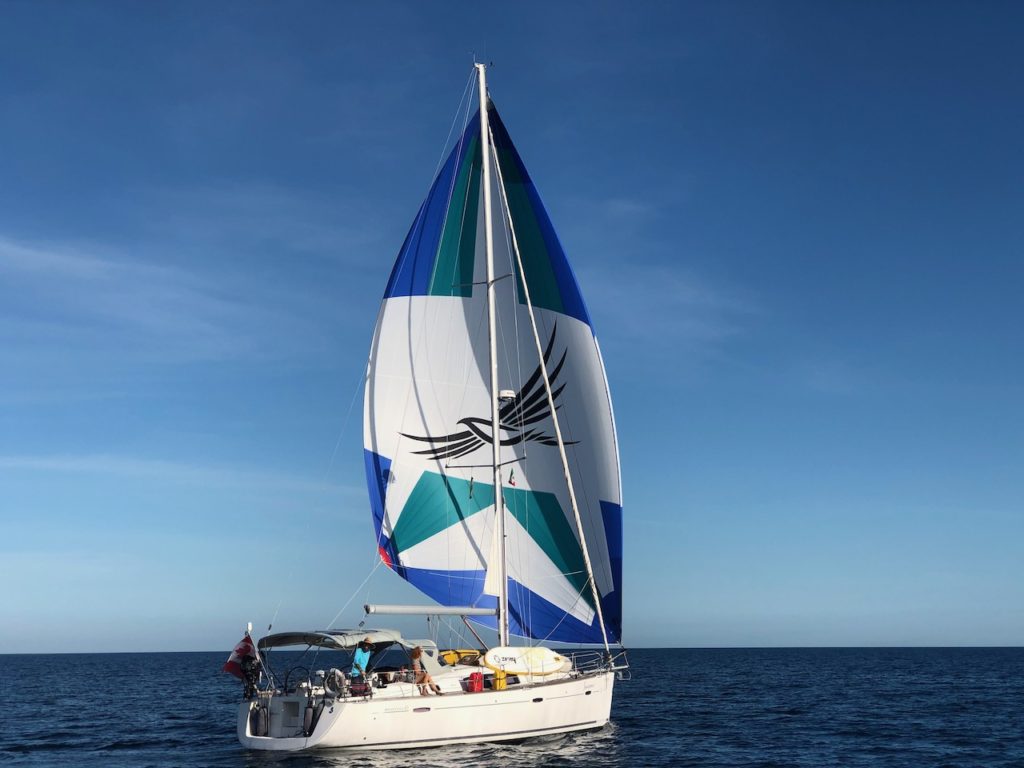
Belcher Point
From the town we moved down to Belcher point in order to be ready for the long passage down to Cabo San Lucas, which would be our next long passage.
Belcher point is a small strip of land that once had a phosphorus plant, a small airstrip and a cannery. Now all that remains is a lot of broken concrete and a small camp some temporary fisherman that have set up there. I went ashore in the kayak and found the place a bit depressing, the temporary camp was very basic and quite bleak.
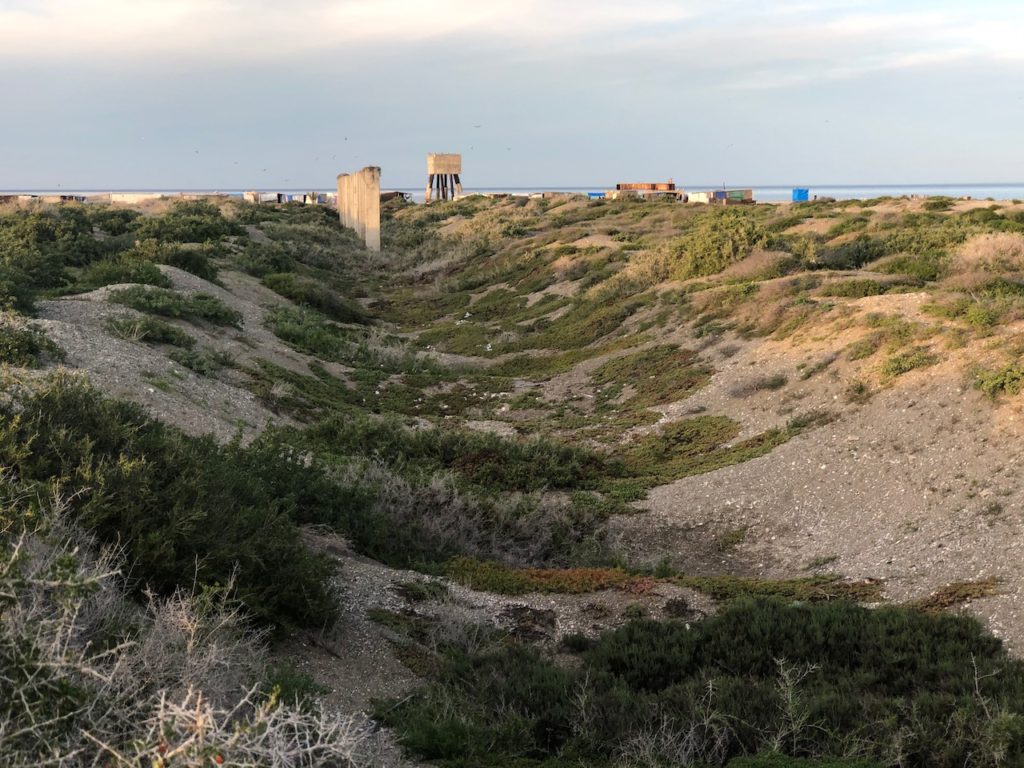
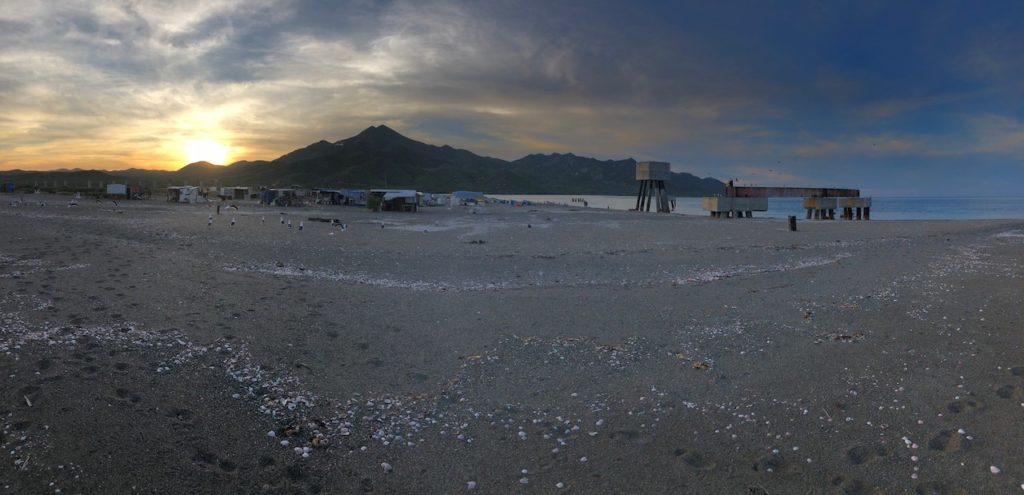
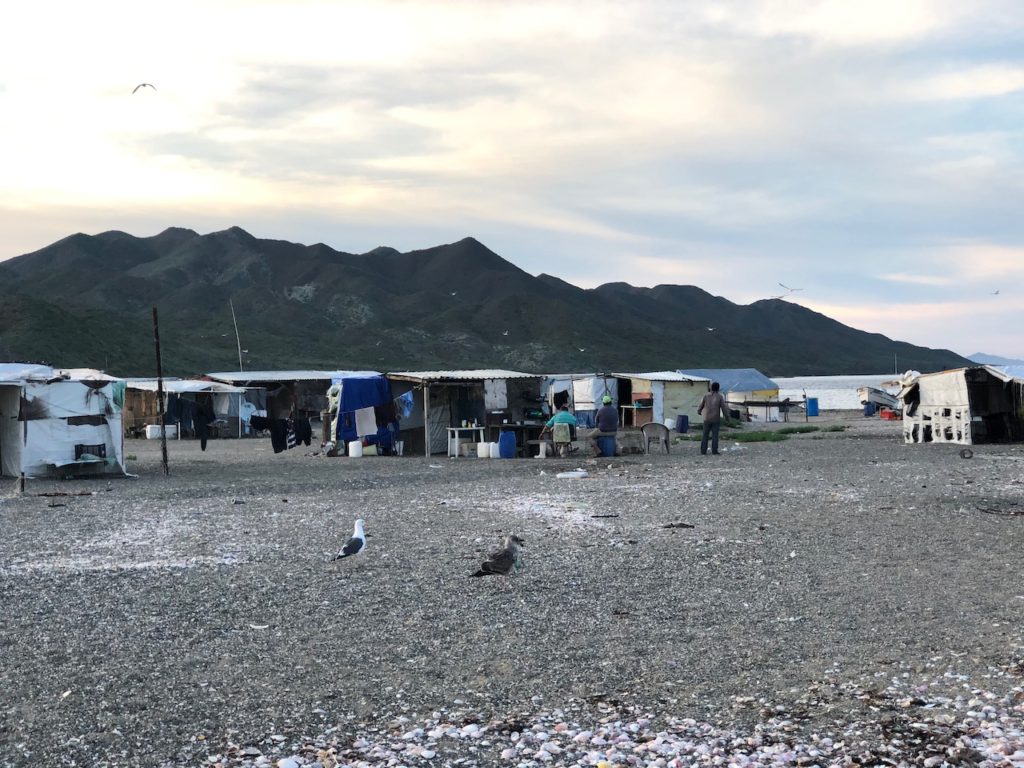
Onwards to Cabo San Lucas
We left at first light for the overnight passage to Cabo San Lucas. This port is at the bottom of the peninsula, and marks the end of the Baja Haha Rally, which completed a few weeks back. We were hoping to get a few nights in the marina there and restock. It has everything you expect of a modern town, with several big box hypermarkets out of town.
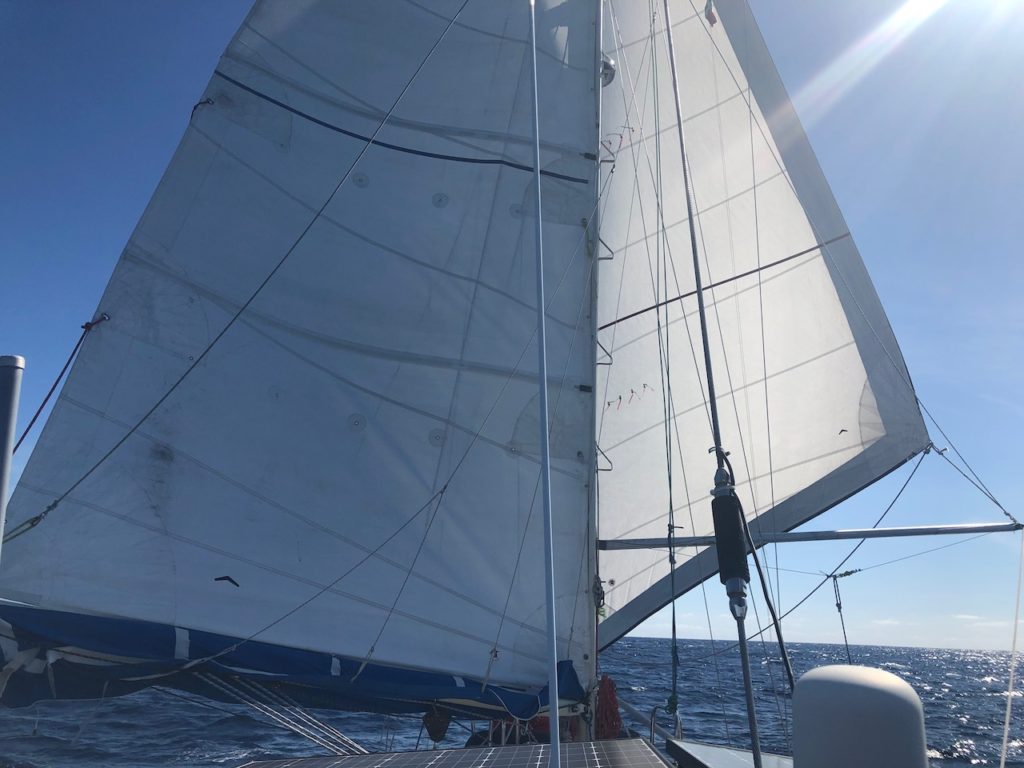
We arrived mid day and anchored off the main beach in front of some flash looking hotel complexes. The water here is amazingly clear. Cabo is very popular with Americans who come here for the water based activities, sailing/fishing/glass bottom boats/Paragliding, all the usual stuff.
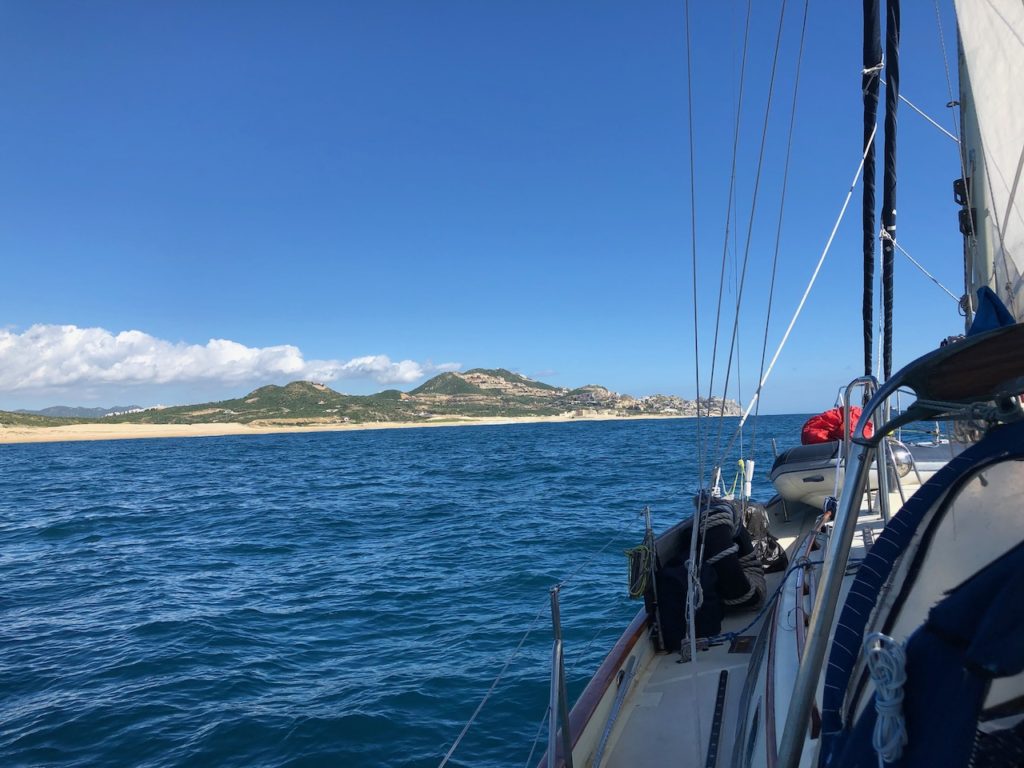
On our way here I felt a glitch in the steering while we were on autohelm, next the autohelm was broken, the motor was whizzing around, but the wheel wasn’t connected anymore. I managed to look in the lazarette and could see the chain had come off, due to a short length of rope that had fallen into the locker and got caught up in the cogs. We had a long way to go so I hooked up the Monitor wind vane steering and that took over for the next 20 hours. In the morning the wind was dropping and I realised that if it dropped much more we wouldn’t be able to sail, and would have to hand steer for the next 6 hours. I had a closer look at the autohelm, and could see that the drive shaft was not connecting to the motor, in fact it was hanging out of the casing. This looked like a major failure, and I was resigned to spending many thousands of pounds getting a new system. I expect my current system is so old it won’t be possible to get spares.
We did end up hand steering for the last three hours doing 30 minute watches, which wasn’t so bad.
While at the anchorage I was able to dismantle the motor and gear/clutch assembly. The shaft had ripped itself out of the clutch mechanism and the key had fallen out stopping it from engaging. Miracuously all the bits went back together, the main problem being two circlips that had been stretched when it broke. It took a few hours, but eventually it all went back together and has been working fine since. Phew!
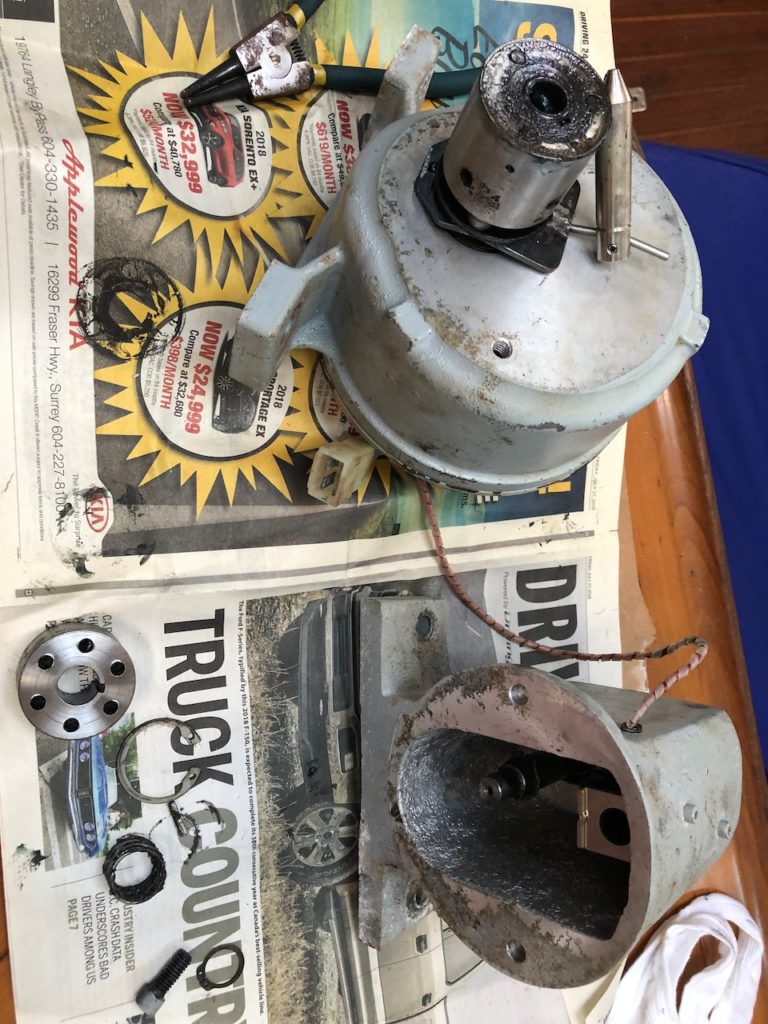
So we moved from the anchorage into the IGY Marina, a very expensive place, but we haven’t been in a marina for so long we felt like treating ourselves and ended up staying three days.
The town is built around the marina with the main boardwalk/Malecon running around the inner basin that contains three marinas. All around the marina you are constantly being offered boat trips/Tequila tasting/fishing excursions/trips to the famous arches/Cuban cigars, and even weed and coke. Thankfully a ‘No Gracias’ is all you need to say to most of them.
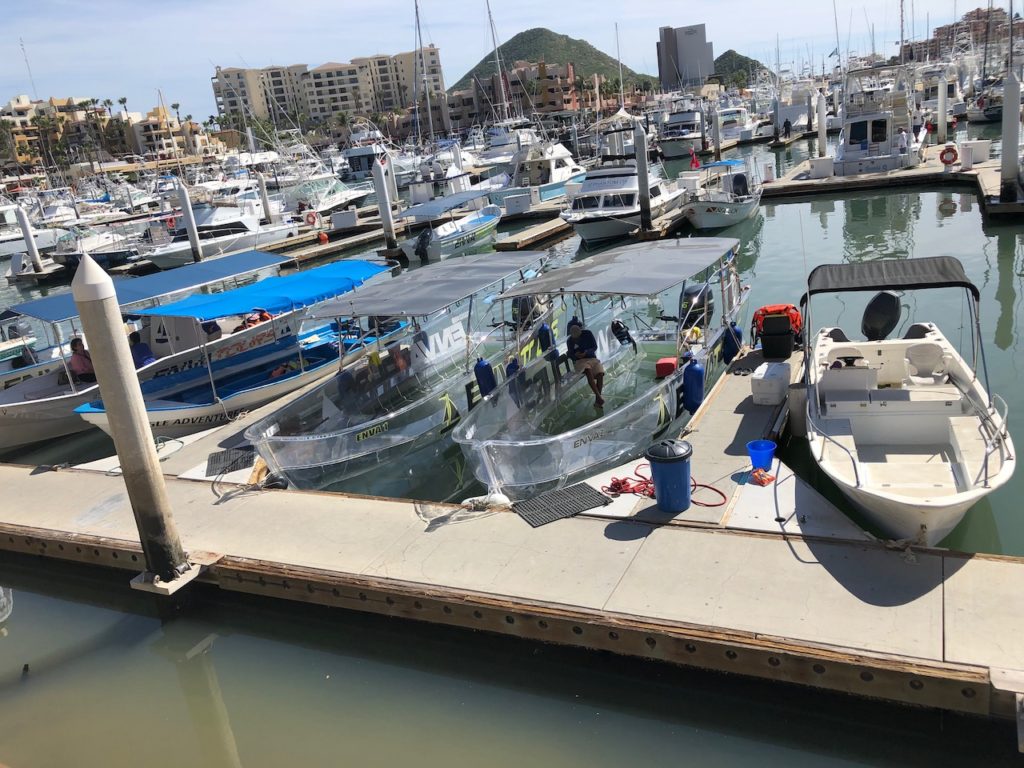
Passport problems
So Cabo is a port of entry and has a harbour master, as do most mexican ports. It is a requirement to clear in and out with each harbour master, or ‘Puerto Capitan’ so off we went up the hill on a very hot day to log in. The bag below had all of our paperwork and our passports in it, it also has a slit down one end where things like passports can slip out when your least expecting it, and be lost forever, which is just what happened.
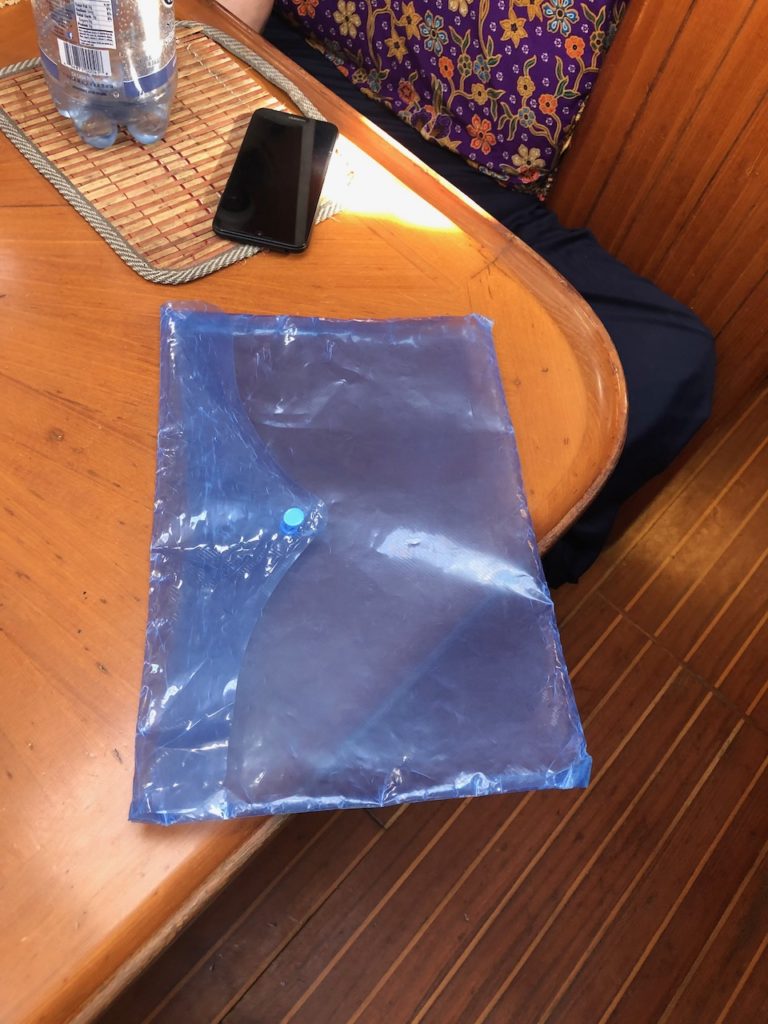
Now losing your passport in a far away place is something I have always dreaded, and not only had I lost mine, but I lost Kathy’s and my previous expired passport, which I keep as it has my 10 year B1/B2 USA Visa in it, this wasn’t easy to obtain.
I had the receptionist at the Marina write a little note for me that I could show to all the vendors/bars I had passed between the boat and the captains office, it said something like ‘I have lost three passports, has anybody handed them in to you, por favour’
I had seen some unfortunate people approaching me, looking very sad and holding a bit of paper asking for money to alleviate their plight’ now I was in the same boat, in as much as looking miserable and pleading for help! Of course I was fortunate enough that I can just buy my way out of the problem, not an option they have the luxury of.
So I was able to get travel documents issued to me by the authorities here that allow us to move around Mexico without issue. Kathy needs an emergency passport to be able to get home in January, so we have to travel to the capital of Mexico, Mexico City, and visit the British embassy where Kathy will be interviewed, before she is issued the relevant papers. I just need to apply online and they will post it out to me here. I presume Kathy will need to answer the British Citizenship test, she better start brushing up on how many overs there are in a test match, which way to pass the port and who will be ‘getting brexit done’. In a way it’s no big deal as we get a holiday in the City, Kathy was flying via there anyway, so it’s just the cost of a few nights in a hotel, and we get a free trip to the big city.
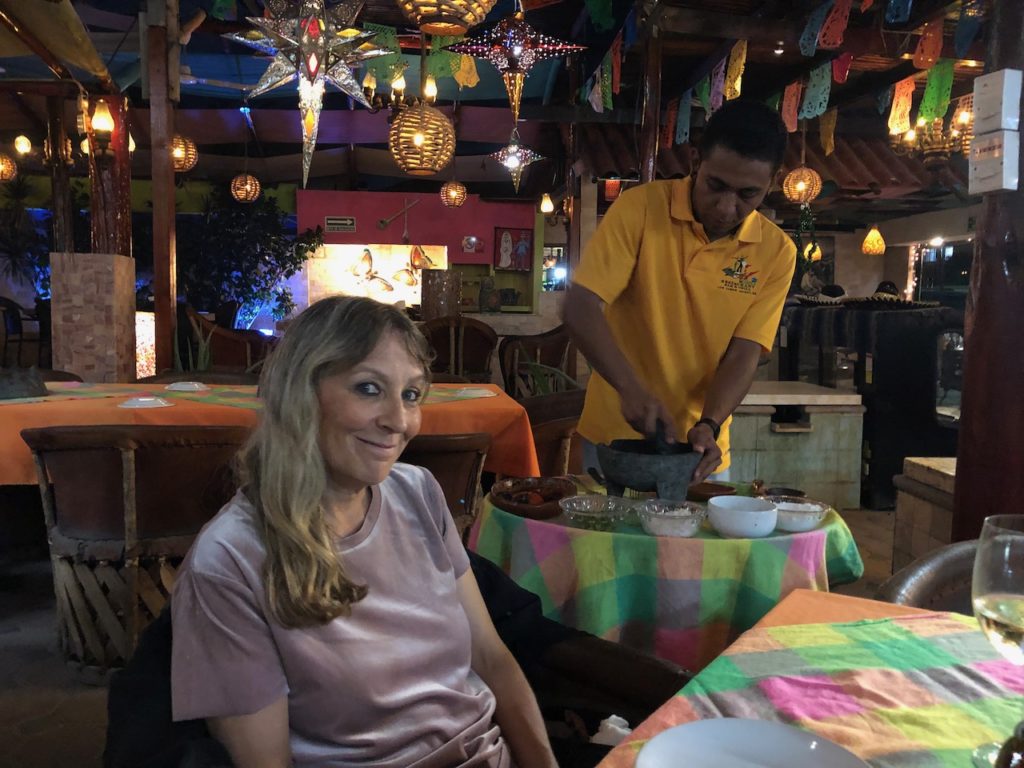
We went looking for a restaurant that night and found an Indian one, which is usually a safe bet for vegans, besides fish I am mostly vegan now as well.
It was closed but next door had a lovely restaurant where the staff made a fresh salsa to our design as a free starter to our meal.
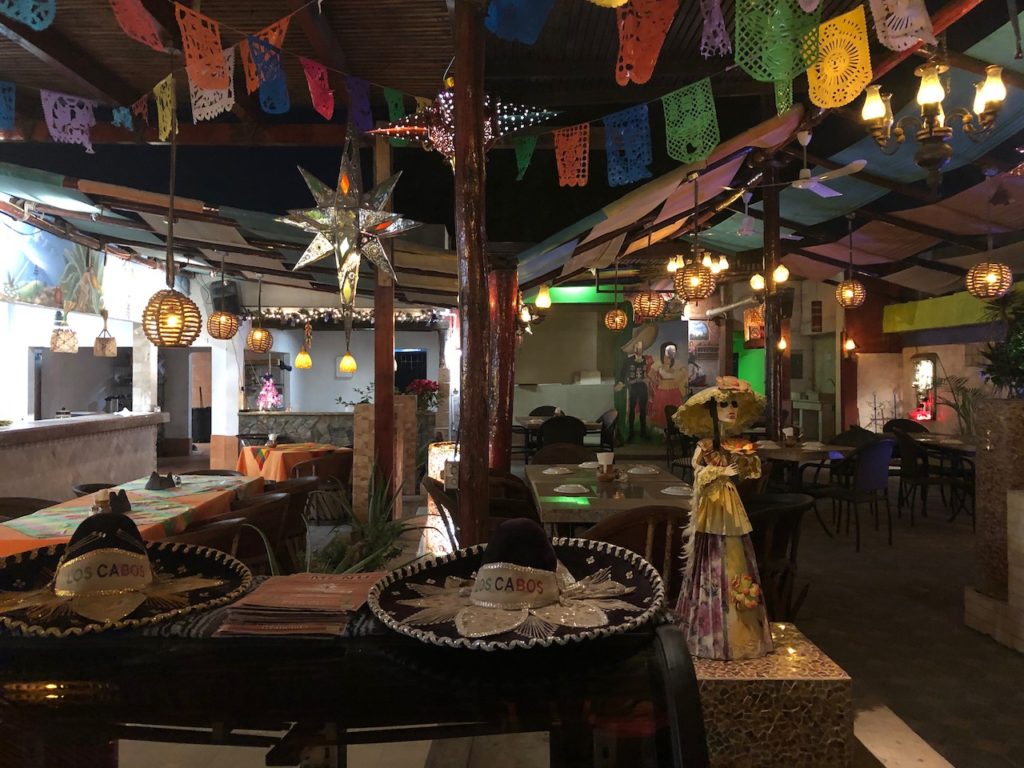
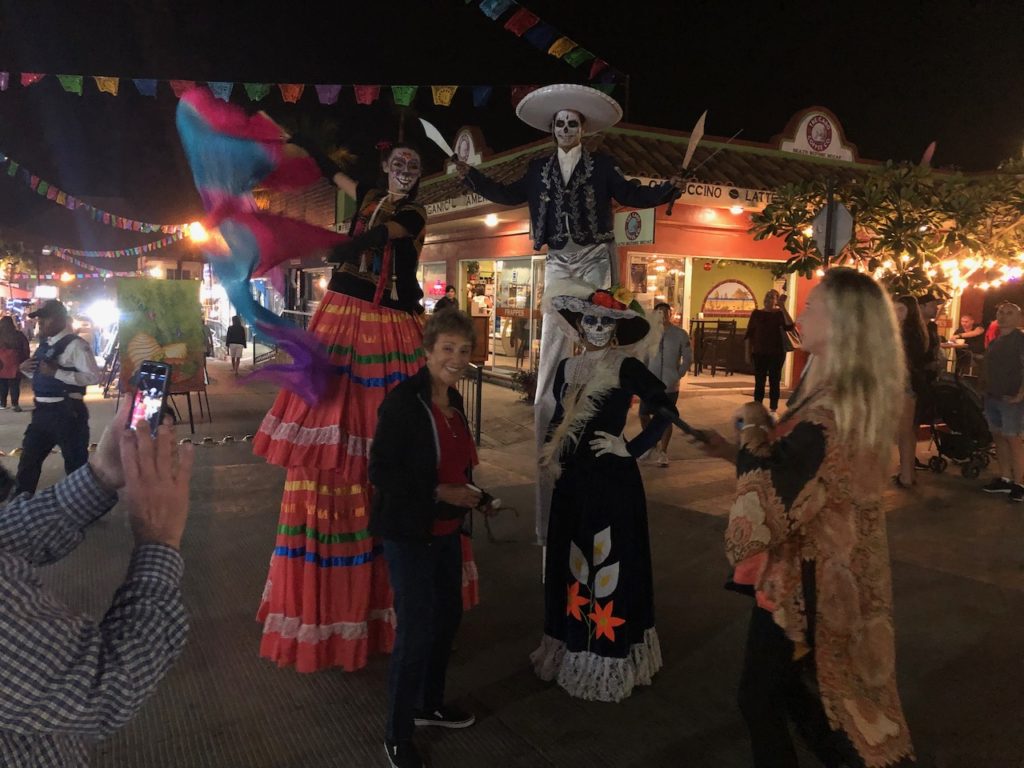
We had a walk around town the next day and there was a small market with some street performers. Very pleasant
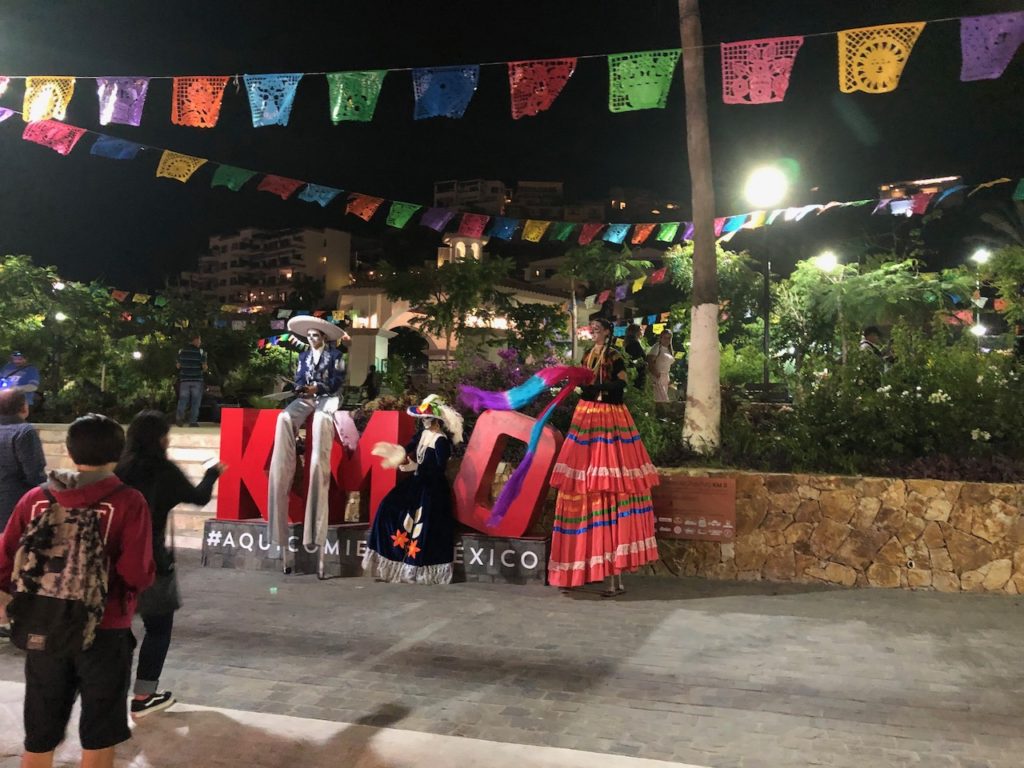
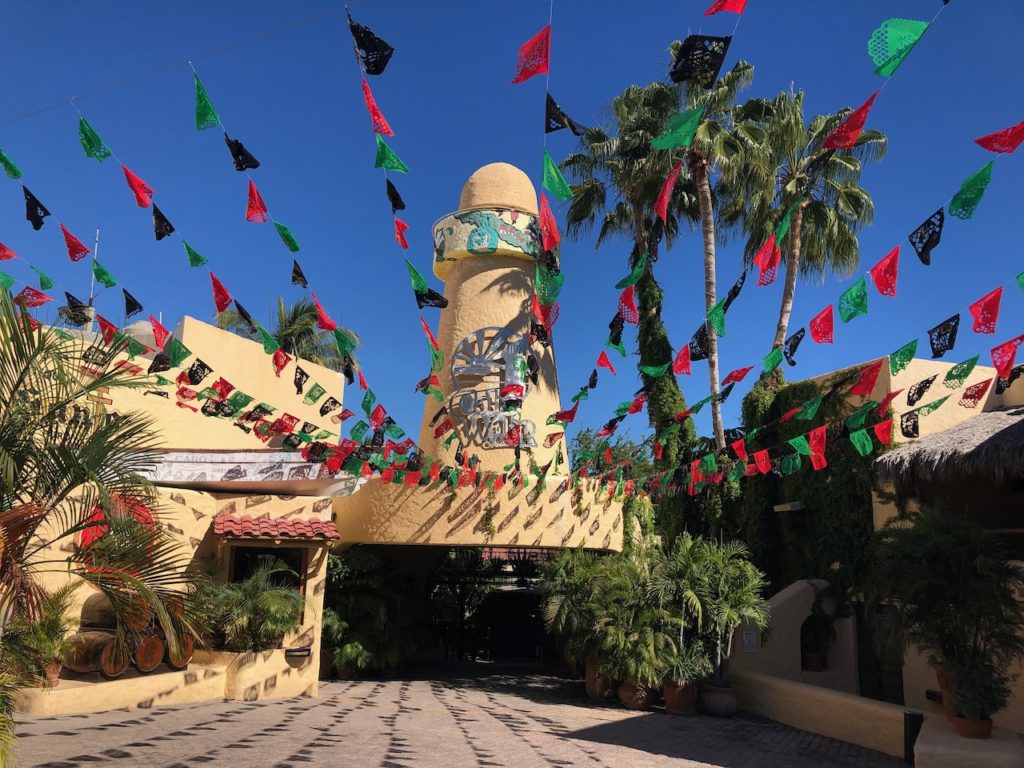
On our last day we had a walk around the marina and Kathy ended up trying some magic creams that the street vendors are constantly pushing. It was quite funny, but the poor guy didn’t get any business from us. Later we looked online and this ‘poor guy‘ had scammed many unsuspecting ladies out of a small fortune by quoting in Peso’s and billing their card in $US, a 20:1 gain. Also a lot of people had bad skin reactions after testing his creams. To be fair we couldn’t be sure it was this particular guy, but that seems to be the MO of the sellers here.
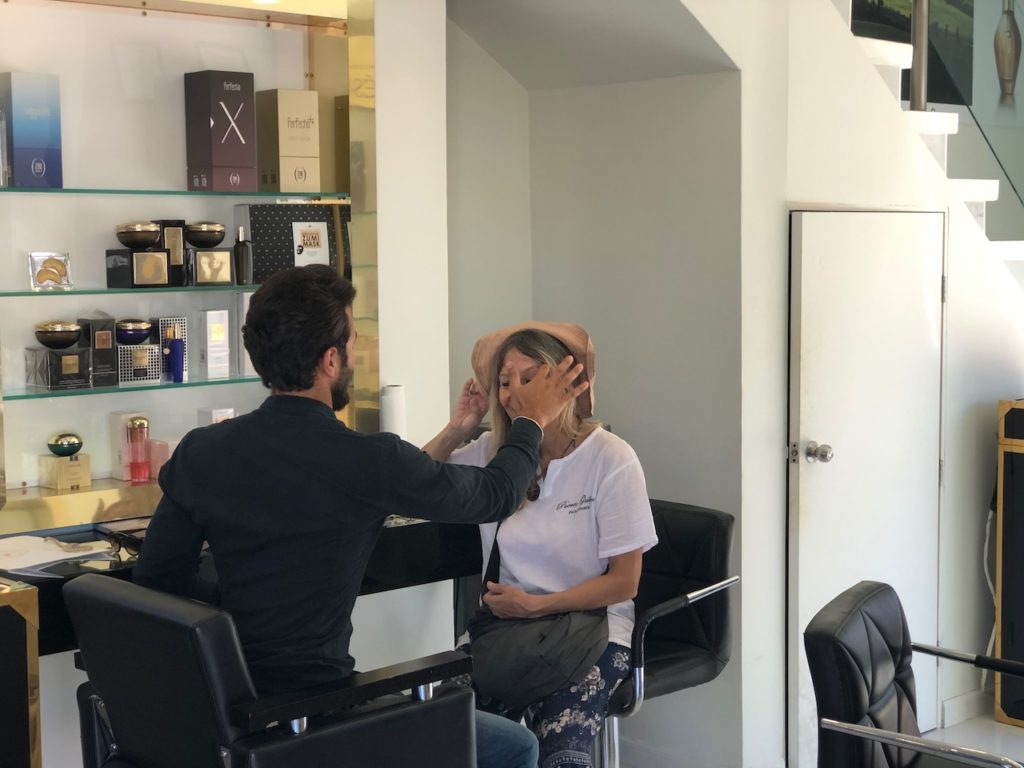
Next we leave Cabo San Lucas and make our way around into the Sea of Cortez. Some bad weather is on the way so we are going to hide for a few days. We won’t be heading any further south this year. In fact we are in the tropics now, but will move back out of them by the time we reach La Paz.
Paul Collister.

